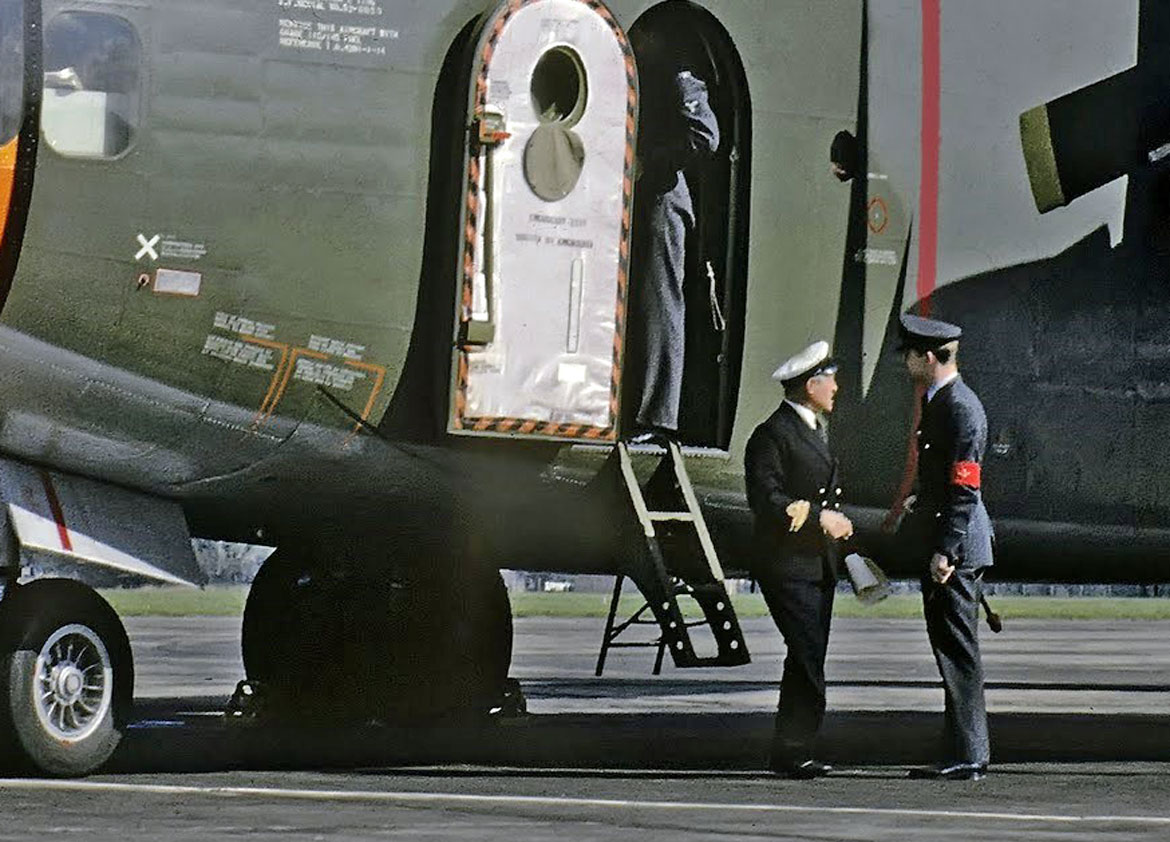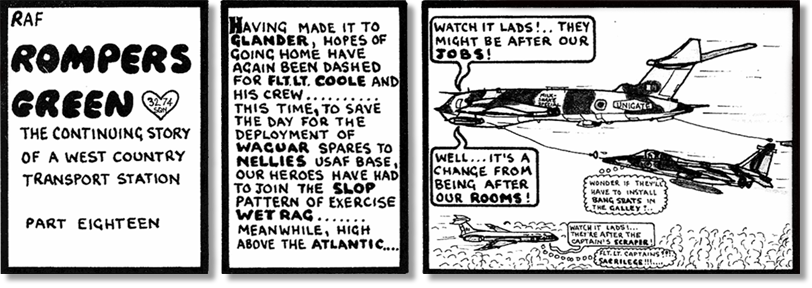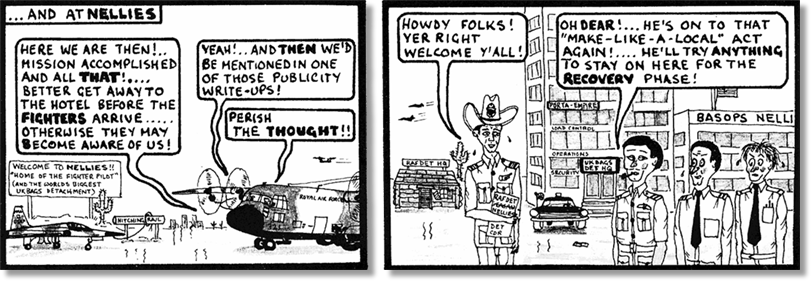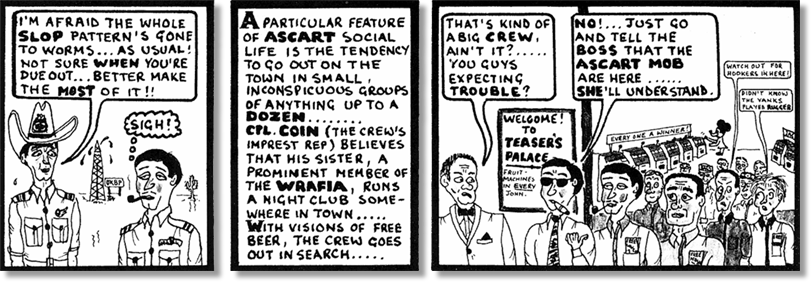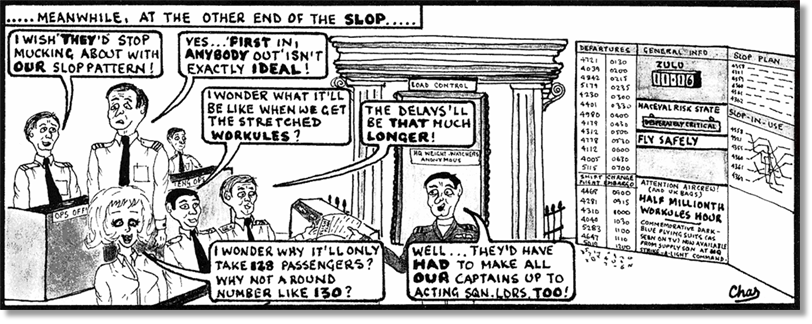Captions Wanted!
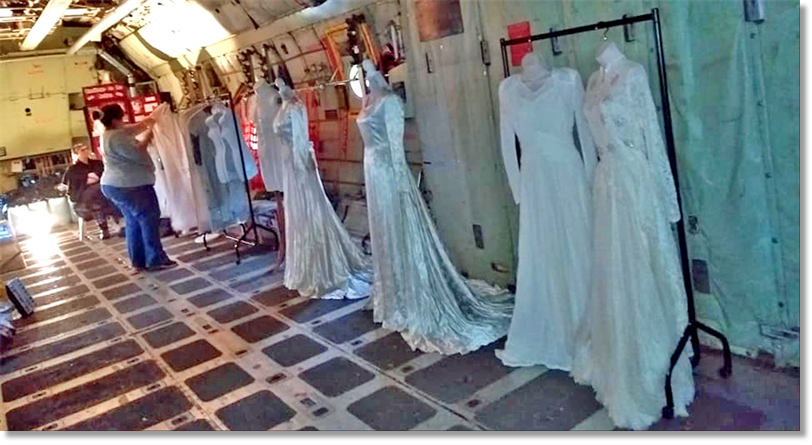
From: Philip Overson, Swindon.
Subject: TAC Demo
Hi Tony,
The picture is from around 1992 taken on a TAC Demo at a UK air show. It features L-R Flt Lt Terry Beach, SAC Andy Waite and myself hanging on for dear life! Back then it was quite common to perform at several different air shows over a weekend and I can remember doing Northolt, Fairford, Marham, and Waddington in a single day once.
In the picture we’re experiencing ‘zero gravity’ in the cargo bay of a Mk1 Herc having just offloaded Landrovers and troops somewhere.
Just about everyone on the squadron loved doing TAC demos, the Hercules crews were great and we had some brilliant night stops around Britain.
With very best wishes,
Phil Overson, Kilo team, UKMAMS 1991-96
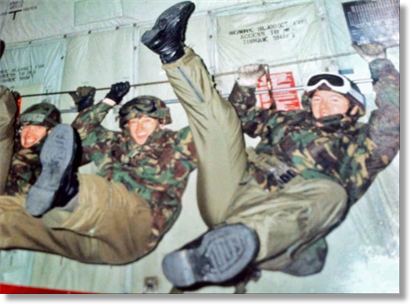
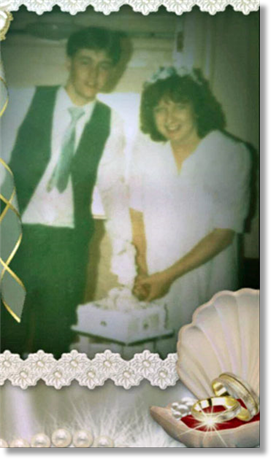
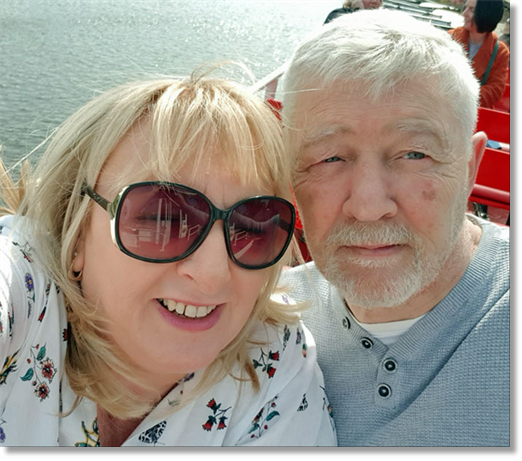
Congratulations to Bev and Kevin Laing on their 36th Anniversary!
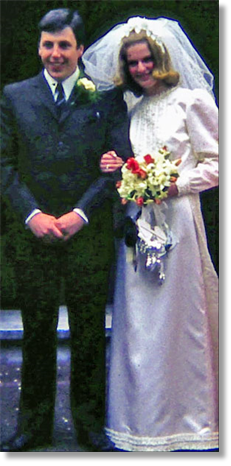
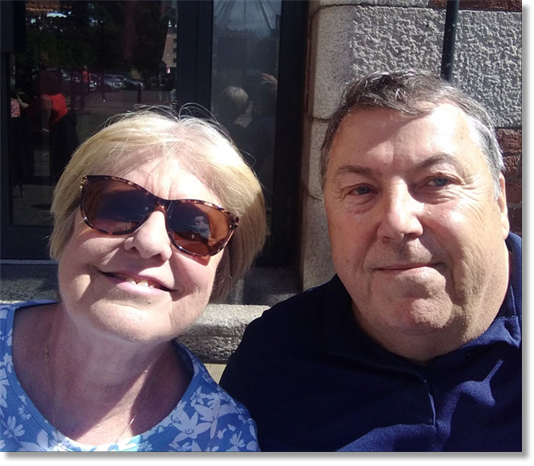
Congratulations to Lin and George Fouhey on the occasion of their 50th Anniversary!

San Fulgencio, Alicante, Spain. Andy Triggs, Bruce Oram and Steve Wright.
Bruce said, "They were on their way to Andy's place in the Murcia area and stopped with us for a couple of hours, they did the same thing last year."
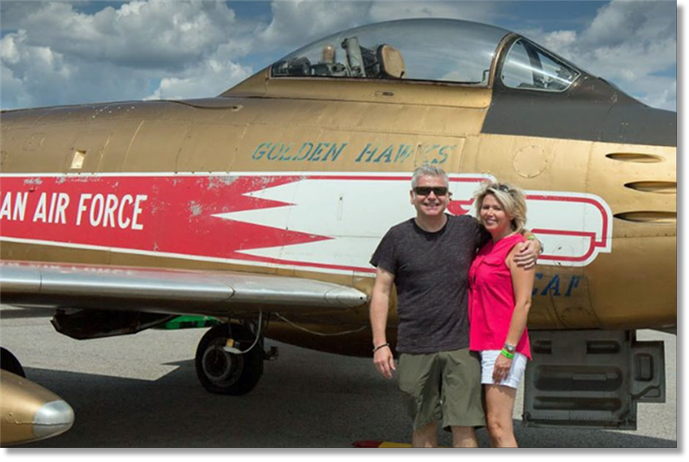
Chris Clarke with girlfriend Donna, celebrating his birthday at the Warplane Heritage Museum in Hamilton, Ontario

Steve Jolley and Mr Mark “Baggy” Bagnall in Huddersfield.
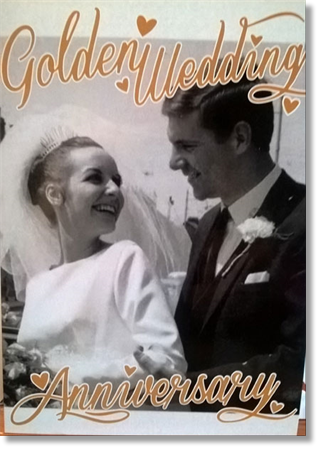
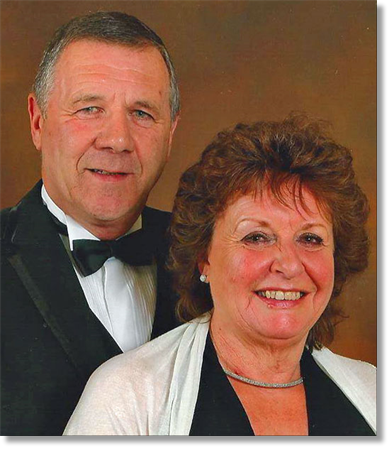
Jackie and Barry Tappenden have just celebrated their 50th - Congrats!



The Royal Air Force (RAF) is to extend its fleet of 14 Lockheed Martin C-130J/C-130J-30 Hercules transport aircraft by a further five years, with a new out-of-service date (OSD) of 2035.
The Ministry of Defence (MoD) told Jane's on 24 July that its fleet of one 'short' C-130J C5 and 13 'long' C-130J-30 C4 aircraft has had its projected OSD pushed back for a second time, following an extension from 2022 to 2030 that was announced in the Strategic Defence and Security Review (SDSR) 2015.
As stated in SDSR 2015, the RAF at that time planned to divest its 10 C-130Js while retaining its 14 C-130J-30s. However, in June 2018 Jane's reported that one of these C-130J-30s was abandoned in Iraq following a heavy landing, leaving just 13 in the inventory. On 9 August 2018 an MoD spokesperson told Jane's that it is still the intention to field 14 Hercules, which necessitated the retention of one C-130J.
In order to see the fleet through to 2030 and now 2035, Marshall Aerospace and Defence Group has begun work on the centre-wing box (CWB) replacement effort for all 14 aircraft. This CWB work is part of a wider GBP350 million (USD436 million) investment in the C-130J/ C-130J-30 fleet announced by the MoD in September 2016. Of this, about GBP200 million is being spent on key components to maintain the life of the aircraft, and GBP150 million on upgrading the fleet with new capabilities.
The C-130J/C-130J-30s replaced the RAF's fleet of 66 C-130Ks, which were first introduced in 1966 and retired in 2013. The C-130J/C-130J-30 will eventually be replaced by the Airbus Defence and Space A400M Atlas. Although the A400M will be used to carry out the special forces work now done by the C-130J/C-130J-30, it will take time to fully roll out this capability (and in some cases, it might remain preferential to use the smaller C-130J/C-130J-30).
Jane's Defence Weekly
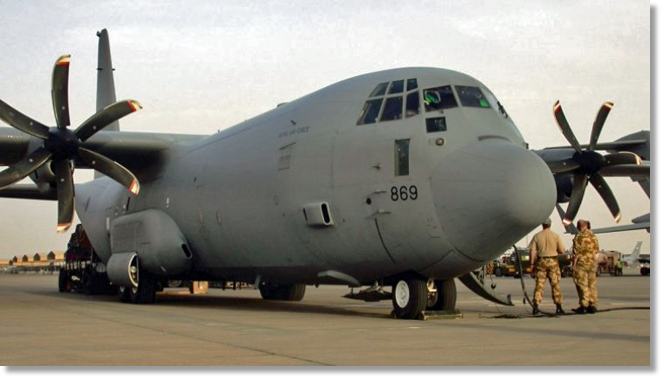

Subject: Air Loadmasters
Hi Tony,
In response to Gerry Davis's item on loadmasters gaining movements skills, if my memory serves me correctly when the late MALM Pete Tyas was on the OCU he used to arrange for the "baby" loadies to spend a few shifts in the Air Cargo hangar at Lyneham in order to gain a better understanding of Movers' duties which seemed to work very well.
Keep the fab stories rolling in and thank you for such a brilliant newsletter.
Martin Liggett

Subject: Re: UKMAMS OBA OBB #062819
G'day again Tony,
Thanks once more for an excellent product.
Should have included the attached with my 'Awkward Load' submission, but I ran out of time and couldn't find either in my rush. (What was that about 'prior planning prevents piss poor performance'?
Photo is (with acknowledgement and thanks) a 'Crown Copyright', taken from Guy Warner's book 'No 230 Squadron Royal Air Force - (Kita chari jauh - We search for').
The log book extract is mine, and shows that the particular extraction with Belfast XR368 was 'Operation Tiger Balm 3', conducted on 8th November 1966, my 22nd birthday.
Kind regards,
Len b
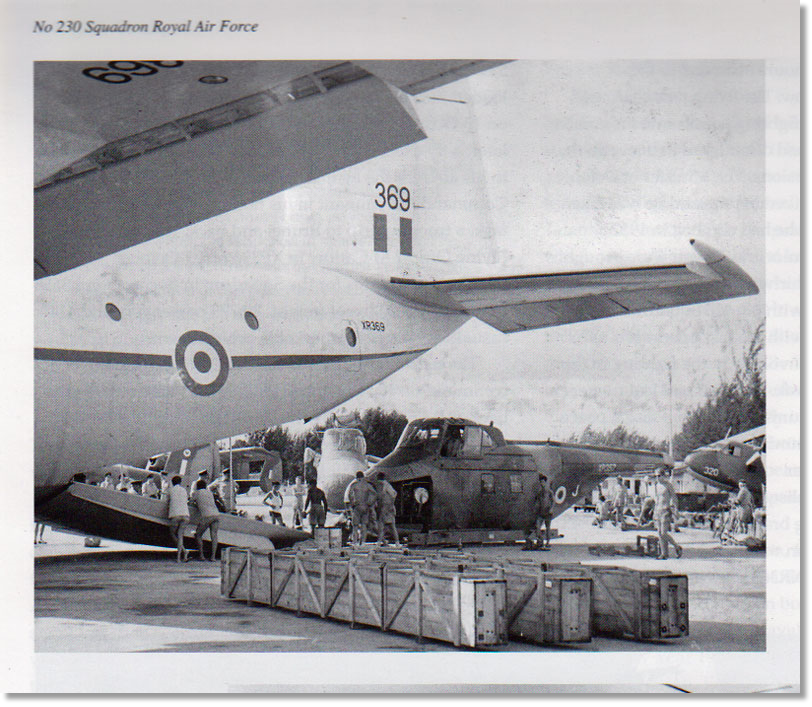
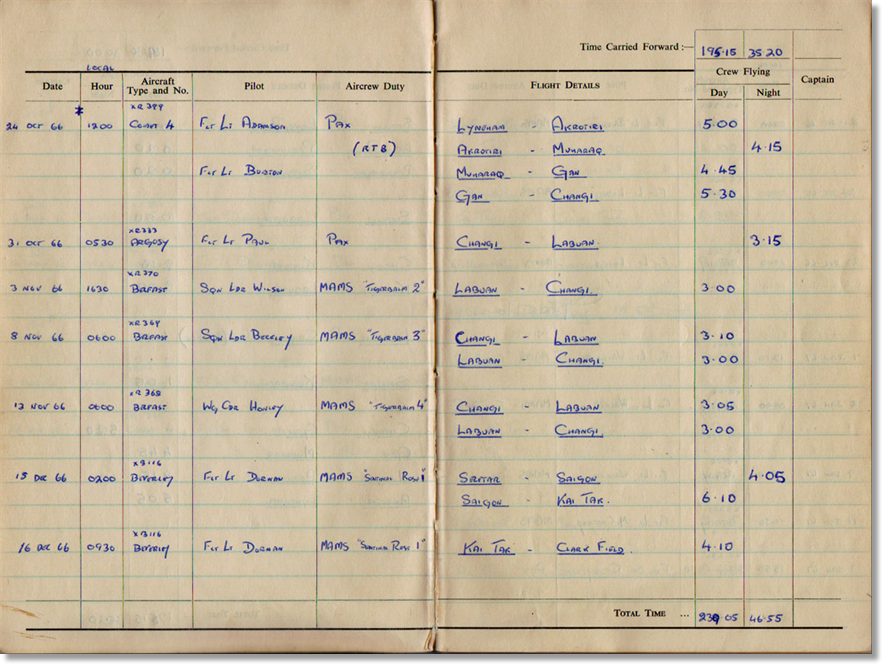

Subject: RE: UKMAMS OBA OBB #062819
Hi Tony,
Another great and interesting issue. Many thanks.
Regarding my ‘Awkward Loads’ item about the sensitive oversize container being loaded at Kai Tak . Please find a supporting photograph of the load in question; regret that it should have been included with original article.
Regards
Mike
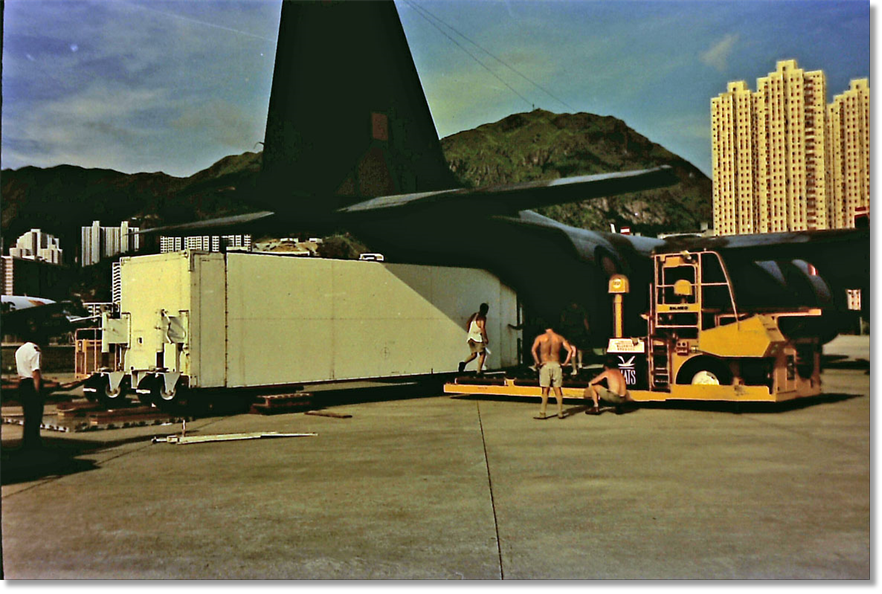

Subject: ACHE
Hi Tony,
Can you ask if anyone has a picture of the Trianco Transfer Loader?
Regards
Syd

Subject: I Learnt About Movements from That!
Hi Tony,
First of all, so many thanks for your newsletter, to which I look forward every month! More power to your already strong elbow.
I learnt about movements from so many events, some of which I have already recalled, but I thought I’d add one new one. Between 1969 and 1972 I was a station mover at RAF Northolt (and many’s the story I could tell about VIP movements there), but this concerns a rather naïve DAMO - that’ll be me; see my picture below with a C119 Flying Boxcar not necessarily from the Air Force concerned and let’s just say a NATO ally Air Force.
At the end of the loading process, I was required to sign a piece of paper which certified that the aircraft had been loaded ‘safely to the standards as specified by the crew of the aircraft’. I declined to sign, as I felt the aircraft was not safe. Junior Pilot Officers should not be allowed to question such statements, but having done so in good faith, and after an hour’s delay, said aircraft departed with my signature on it, insisted upon by OC Ops... I learnt about all sorts of things from that! Safe, it most certainly was not. A learning process it surely was!
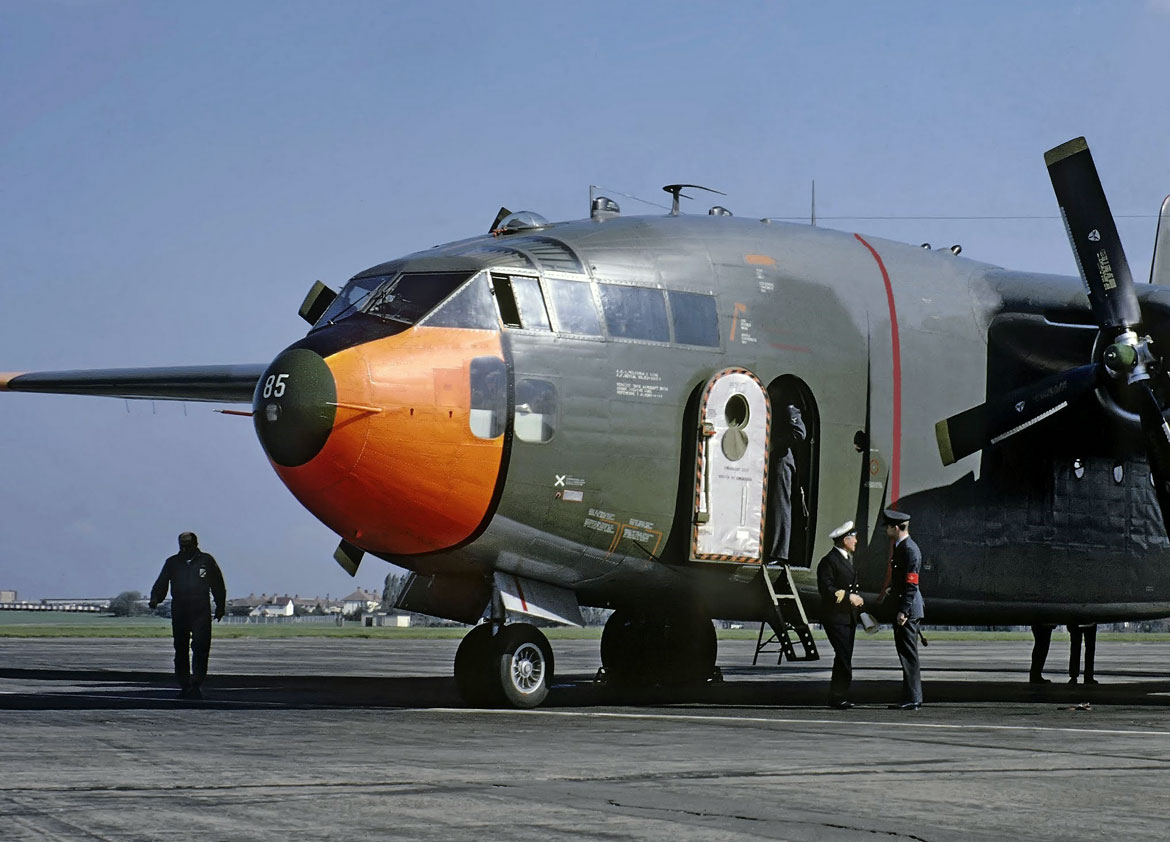

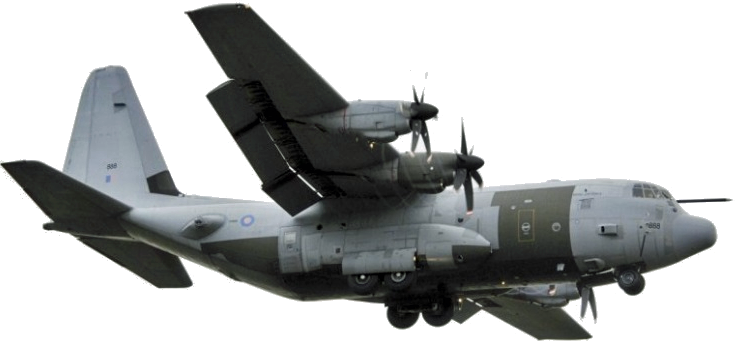
Bangladesh is to receive five short-bodied C-130Js that the UK is divesting itself of, with all deliveries to take place by the end of the year.
The ‘short-bodied’ C-130Js (designated C5 in Royal Air Force [RAF] service) were ordered in two batches of two and three aircraft in 2018 and earlier in 2019. The deals were initially revealed via maintenance contracts announced by Marshall Aerospace and Defence Group (ADG), although it was the MoD that confirmed to Jane’s the total number.
The Bangladesh Air Force has previously noted that the acquisition of C-130J aircraft from the RAF provides a key enhancement to its current airlift capability. As well as performing in-country support of the aircraft, Marshalls will also be modifying the aircraft, including designing, developing, and installing a medical evacuation (MEDEVAC) capability, to enable the Bangladeshi Air Force to carry out tasks within the country and overseas in support of UN missions.
The acquisition of the C-130Js will enable the Bangladeshi Air Force to retire the four C-130Bs that it has fielded since 2001 (these were acquired secondhand from the United States) at the same time as augmenting its three Antonov An-32 ‘Cline’ and three L-410UVP-200 transport aircraft that date from 1989 and 2015 respectively.
Further to the air force’s transport fleet, the Bangladesh Army has received a single Airbus Defence and Space (DS) C295W tactical transport aircraft that it ordered in 2016.
Jane's Defence Weekly

Ascension runway may not be repaired until 2022
The contract to repair the 3,000-meter runway at RAF Ascension Island has yet to be awarded, and work may not be complete until 2022. It has been partially closed since April 2017. This means the Falkland Islands/Brize Norton airbridge will continue to operate through Cape Verde. It is understood that the runway is “critical” to existing plans to reinforce the Falkland Islands if a threat was identified. In May 2018 Defence Minister Mark Lancaster said “The Ascension Island airfield is critical to our ability to support the Falkland Islands.”
In a Parliamentary answer last week, Defence Minister Mark Lancaster confirmed: “The US Air Force Civil Engineering Centre are expecting tender returns in August 2019 from which the contract will be awarded in the final quarter of 2019”
It is anticipated that the repair work could take up to 24 months. The runway itself is owned by the US Department of Defense, although the Royal Air Force maintain a base on the airfield. The repair work was originally scheduled to be complete by 2020.
Voyager aircraft currently serve the twice a week airbridge flight from RAF Brize Norton to the Falklands via Cape Verde. While it is likely they’d be part of a reinforcement plan, heavier equipment would be carried by either C17 or A400M Atlas. Any suggestion that plans to reinforce the Falkland Islands would be hindered by the runway closure have been dismissed. Transport aircraft can still operate from Ascension Island, including C-130, A400M, and C-17.
Whilst the runway closure is an issue for the passenger airbridge and the Ascension Island Government, it appears not to be an issue for the security of the Falkland Islands. In a statement to the UK Defence Journal, the Ministry of Defence confirmed: “The Airbridge will continue to route through Cape Verde until the runway is refurbished. We are working collaboratively with the US to deliver this. The airbridge and regular resupply ship are successfully maintaining freight to both Ascension Island and the Falkland Islands.”
UK Defence Journal


Subject: Memories of JAM21
I suppose the memory bank throws up the same stuff for both of us, Tony. The most prominent of them was the air experience "jolly" DH Comet 4 from Abingdon up to Turnhouse (Edinburgh). After taxiing, we were allowed to de-plane for a leg stretch, then back on board to return to Abingdon. We Scots, just two of us, kissed the ground first before re-boarding.
As the aircraft accelerated down the runway, an errant seagull flew into one of the engines, the whole aircraft shuddered as the jockey shut down. Taxied back to where we'd been, and were dispatched to the mess for lunch. When we returned to the aircraft, the remnants of the seagull were still being scooped out of the engine intake. There was no lasting damage and we were soon airborne again.
One other memory, I blew the engine on my motorbike on the way back to Abingdon from a weekend at Scampton. That cost a few bob, but my dad and I got it back on the road between us.
I guess the course was a mixed bag of bodies, although several of us caught up with some of the guys we'd come through Hereford with; not a bad thing.
Alec.
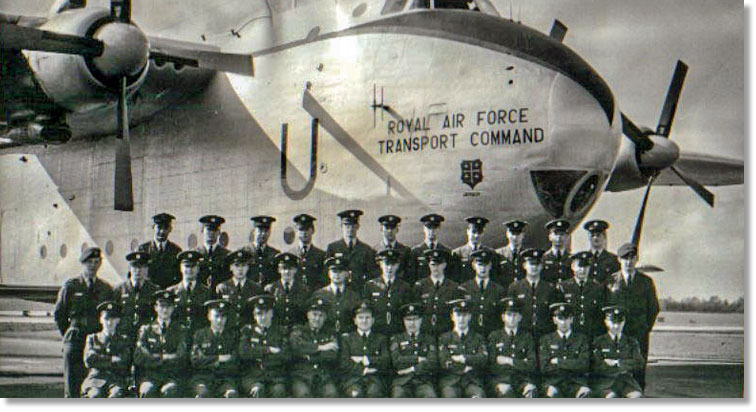

Subject: Memories of my Air Movements Training
Hi Tony,
Memories of Air Movements training? Not a lot, and more just a jumble of experiences. For new listeners to this channel, I should explain that as a Cranwell Flight Cadet entrant in the 1960s, while our soon to be aircrew 85 cadet entry colleagues were learning to fly or navigate, we embryo Equipment Officers, all 5 of us, did our professional training, including air movements theory, in the hutted classrooms somewhere to the west of the familiar College main building. The theory concluded with a week’s practical exposure to reality at RAF Lyneham.
Memories. Picture one very pleasant soporific pre-exam session sitting/lying in the sunshine on the grass outside the lecture room hut, while our lecturer, the wonderful, then Flt Lt, Jim Shearer called out Form Numbers various, and our name. I will never ever forget the prompt response from one of our two Irish colleagues to the call of Form 1386: ‘Battle of Crecy, Sir!’ When the correct answer should of course have been the Swiss victory over the Austrians at the Battle of Semach, or even Air Way Bill. For the rest of the air movements module at the College of Knowledge? No, nothing else comes to mind!
However, the week at RAF Lyneham did have profound influence on the rest of my Service life. For the first 4 days we were each allocated to a shift, put on overalls and literally got our hands dirty at the sharp end. On the Thursday, plan A was that we would all go our own ways and head for home, or wherever, for a break. It may have been just before Easter 1964? However, just before we were due to disperse, Cyprus had one of its occasional ‘events’, and all hell let loose, but in a very calm controlled Lyneham way. By now I was really enjoying this air movements stuff, and I asked if I could stay on as a spare pair of hands. Offer duly accepted, and this was my first real experience of what air movements was all about. Brits being loaded with Landrovers and troops, and back-loaded with returning evacuees. On the Friday evening I recall just two of us, the SAMO Sqn Ldr ‘Dad’ Owens and myself, dragging the load for the next scheduled Brit freighter, with the SAMO driving the forks; everyone else being diverted to cover the operational tasks. On the Tuesday I left knowing that this was where I really wanted to be – operational air movements.
The only other real air movements training experience memory (actually x 2) was sliding down a rope for a night exit from a hovering Whirlwind helicopter somewhere over Salisbury Plain as part of the Army’s Helicopter Underslung Load preparation course at Old Sarum. And, then doing the identical course 3 months later, including the rope dangling bit, which would mean I was now fully qualified to Instruct on Underslung Load preparation!
I seem to recall that the rope exit was so that I could check the possible landing site and if all was well, marshal the helicopter in. I presume that if the LZ turned out to be unacceptable I would just leg it, hopefully in the opposite direction to where the enemy was!
Best wishes from a soggy Buckinghamshire!
David Powell
F Team UKMAMS 1967-69

Subject: Memories of my Air Movements Training
Hi Tony,
My basic training was at RAF Kidbrooke early November to late December 1961. My real training was in a two year tour at RAF Khormaksar that followed the basic course (but that's another story!)
Kidbrooke, as a station, was a dream! Compared with square bashing at RAF Bridgenorth, we had so much spare time. The food was like, no better than, home cooking! The nearby rail station got you into central London in about 25 minutes (and we got forces rate tickets). Just round the corner was a rehabilitation training centre where you could get a haircut, head massage etc for a small contribution towards tools. Oh yes, and we had the Air Movements course which was really interesting!
For me, weekends were bliss! Saturday evening meant a trip into Charing Cross, a few beers and a chance to do some chatting up followed by an all-night trad jazz session at Ken Colyers Jazz Club in Compton Street - most of the big names and bands were there, usually after midnight. There was no bar but no restriction on what booze you could bring in.
Quite often, we left as day broke around 8am, with female company to get coffee, tea and bacon rolls from a stall under Charing Cross bridge. If we were really lucky, we could invite said company to go to the theatre that night or during the week.
This meant leaving camp early evening, off to Charing Cross, then round the corner to the Nuffield Centre (I think it was in Adelaide Street). They gave out complimentary theatre tickets at 6pm with priority given to personnel on leave and then to any serving member. It was pot luck what shows were available.
So, with free tickets in hand, it was off to meet the young lady and thoroughly impress her with (a) taking her to the theatre and (b) usually getting the best seats. One time, I got tickets to see Dave Brubeck at the Lewisham Gaumont.
Sadly, I had to leave Kidbrooke on embarkation leave for my posting to Khormaksar but got Christmas at home and thoroughly drunk in London on New Years Eve.
Regards
John

Subject: Memories of my Air Movements Training
Hello Tony,
As a Supply Sergeant at RAF Watton, Norfolk, in November 1968 I attended No. 101 Senior Air Movements Course at RAF Abingdon. Previous to this I had a tour at RAF Hereford employed as a Supply Instructor using a ‘Talk & Chalk’ method of instruction, so I was completely taken by surprise to find that this method had been overtaken by the use of an overhead projector. It was also a surprise to find that my eyesight needed urgent attention. There was also a very young pilot officer, Dennis Micalif, then o/c Role & Loose at RAF Lyneham, sitting immediately behind me.
This course was eventually followed by an unaccompanied tour to GULF MAMS RAF Muharraq. I still ask myself however did an inexperienced SNCO be posted to such to such a unit? Not that I was complaining, what better way could you ask to spend a 13 months unaccompanied posting?
March 1972 Whilst on the Instructing Staff at the RAF Movements School, Brize Norton, the Air Movements Trade came into being. The then o/c decreed that any staff member not meeting the new Trade Criteria would have to pass the required course. Thus I found myself on No 1 Advanced Air Movements Controller Course, along with 5/6 other staff including our late Warrant Officer. As I re-call, the final examination paper was set & marked by Sgt Eric Batty.
Later in my movements career Dennis Micalef & I were to meet when he was my boss at The RAF Movements School, RAF Abingdon & Brize Norton. My RAF Movements memories are some of the best in a career spanning almost 37 years.
All the best,
John

Subject: Memories of my Air Movements Training
When I was being trained at Abingdon, I remember that there was a WAAF who took a fancy to me and she used to drink pints. The training itself is a total blank, but I was 19 and I remember that lassie!
Chas 43rd


Subject: Trade training
Hi Tony,
Just a couple of tales for you: As a student... I was a member of number 30 advanced movements course. Brian Basting was one of the instructors and he used this bell to simulate a telephone call coming in. When he was out of the room the bells clapper was either removed or silenced. Upon his return to the room he attempted to ring the bell to no avail, needless to say he was unable to give us any other changes to what we were doing.
On the other side as School WO... The officers' movements course were in the hangar doing the exercise where one of them would take the position of DAMO. The aircraft they were loading was the VC10 and the position of DAMO was taken by a certain female officer. She was dressed in shirt and skirt and insisted she wanted to check the ventral loading. She took off her shoes and went up the baggage belt to do her check. When she came back down the belt she could not find her shoes! At that point we stopped the exercise to fully explain to the whole course the HS&W implications of her decision. The lady in question went on to be a Station Commander.
Cheers the noo!
Bruce

Subject: Memories of my Air Movements Training
Hi Tony,
So, I do feel qualified to write a dispatch on this particular subject. As you will well know, I joined UKMAMS Abingdon in 1970, straight from my 13-month stint in Sharjah. I spent the first few years on Kilo team, under Brian Shorter, alongside Baz Shatford and Arthur Taylor etc; It was a great team and we had a lot of fun.
Next up I was transferred to the Training team under the passionate and wonderfully ebullient Norrie Radcliffe and of course the charming and knowledgeable Dave Egglington. Once I set my stall out with Norrie as to which Rugby team I supported, Ireland or England, we got along fine. Dave E was such a kind and supportive teacher and I learnt so much from him. To be honest it was a pretty scary introduction, as I had to learn up on all the manuals that made up the Air Movements skill set. Needless to say, I also had to present in front of more senior, more qualified and in many cases much older members of the squadron. I did survive the banter and the piss taking and believe I am a better person for it all.
Later in my life, as a civilian, when I had to carry out company presentations and speeches to large audiences, I did look back in the knowledge that my confidence and success in these areas came from that invaluable experiance when I was on the UKMAMS Training Team.
Best,
James
From: Gerry Davis, Bedminster, Somerset
Subject: My Movements Course
In 1962, just back from two years in Bahrain, I was posted to RAF Benson on Air Movements. It wasn’t long before I was sent on a Movements course at RAF Kidbrooke, situated in the London borough of Greenwich. This detachment lasted six weeks, during which I, along with 29 others, underwent training in all aspects of air, sea and land movement of personnel and freight. On completion of the course and passing the final exam I gained the trade annotation of Q-EQ-AM. (Which I think means Qualified Equipment and Air Movements) My trade now was Supplier II, Q-EQ-AM.
Kidbrooke started off as a gliding school in 1941, although the area these days is totally surrounded by housing. Over its operational life there were many different RAF units based there, including a Barrage Balloon Depot, No1 Stores Depot, a language school and an Air Publication and Forms store, to mention but a few. There was some talk of ‘Secret goings on’ there as well over its lifetime. The Movements school was based there from 1954 until 1963 and my detachment was during November and December 1962 on No. 6 Junior Movements Course.
You never know what to expect when you are sent on a course, but this was some experience. I remember, for me the course was easy, having just completed 2 years on Air Movements work in Bahrain. By that I mean it wasn’t stressful. The instructors were authoritative and accommodating. The curriculum included both surface and air movements, with little problems thrown in for good measure, which included planning a road or Barge route with a large load and several obstacles which you had to avoid, like low bridges, road works, etc. Ocean shipping, canal, rail and air movements were also taught.
With the West End of London on our door step, it was fantastic. In addition, ‘The Dover Patrol’ pub was only a stone’s throw away down the road. We seemed to have lots of sessions in there during the six weeks duration of the course. The pub was easily identifiable by its sign ‘A ship in choppy waters in the English Channel.’ It has long since been pulled down and the area is now a housing estate.
Naturally, there was a rush to get to the ‘West End’ on the tube, after cease work each day and to get the forces free tickets for all the big shows. These were obtainable from the ‘Union Jack Club’ (a sort of serviceman’s / women’s hotel) which always seemed to be full of Wrens (Women’s Royal Naval Service). Watching them dance in formation was something to behold… boy… I bet you would like to hear more about those smartly uniformed lovely ladies?
One or two of the course members also took advantage of the many other forms of entertainment that was on offer in our capital city. Some it seemed never got out of Soho!
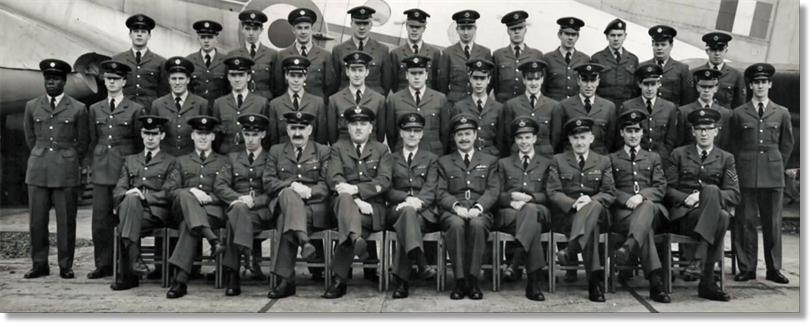
It was quite entertaining to watch some of the lads, first thing in the morning, who had run from the tube station, trying to make it in time for the first lesson, having stayed out all night, missing a night’s kip and the excellent food that was on offer. All the meals were first rate. I even took advantage of the RAF Dental Services, who, at that time their London clinic was accommodated in Harley Street; making several visits to have my front teeth capped.
There was no airfield at Kidbrooke, although we did have a Hastings aircraft fuselage, minus the wings to practice loading/unloading on. The Flight Sergeant Instructor, Chiefy Waltham, used the cockpit for growing tomatoes in, which was out of bounds to us ‘erks.’
My Kidbrooke experience was something special; it was memorable for all the right reasons. All of us were young and looking for adventure. The time spent there, because of its location in London, was second to none; an eye opener and a learning curve in itself. The Thomas Tallis School now occupies the site.
Course photo - December 1962 - I am on the front row, seated second in from the right.
Regards,
Gerry

Subject: Memories of my Air Movements Training
Hi Tony,
Only one real memory for me, and I still carry that memory with me to this day. Yes, it was mid-1973 and I was the one that broke his leg during a training exercise on the C130 mockup when an arrestor cable drum came down on my leg, foot and ankle.
I spent a couple of weeks at Wroughton Hospital and then returned to the AMTS at Brize to wait out the healing process, hobbling around around on crutches with my leg in plaster before I could graduate. The board of enquiry decided it was my fault (it was) but because I was a stupid AC who didn't know any better I was allowed to stay in as they decided I had been punished enough. My ankle was just put back into position by the doctors at Wroughton and the bones allowed to fuse together.
So, 46 years later that ankle still only has very limited movement and it hurts in cold weather - and I still have to explain to doctors how it happened as they can't believe it was left that way. I have a feeling this incident was held up as an example of "what not to do" to future classes of movers, but that might just be a story I was told many years later by Dennis Hartill, one of my instructors on that day.
I really don't remember who was with me when it happened but maybe some on here recall the incident? I started on No. 9 Mov Ops course and passed out on No. 10, possibly the only person in the history of AMTS (as it was called then) ever to have started on one course but graduated on the next.
Andy Kay

Subject: Air Movements Training Course
Hi Tony,
I was at RAF Odiham, stuck there for four years, when I was sent to Abingdon for the Junior Air Movements Course. I enjoyed it. The physical side was fine and to my surprise the paper work was ok. I gained an 'A' pass (84% I think). Within a month I was posted to UKMAMS for another four years of my life.
Two things I remember from the school: Firstly, the story of the training NCO in the tail boom of of a Beverley pointing out the dangers of stepping back over an open hatch to the lower cargo bay. Without thinking he did exactly that - Ouch!
Secondly, as the Army parachutists were also trained at Abingdon and marched everywhere, it was decided that the course would also march, but without the stamping and shouting army fashion. We would move with the quiet dignity which the RAF was accustomed to. Loved the sentiment!
Taff Price.
F Team (1966/70)

Subject: Memories of my Air Movements Training
After reflection on this topic, I realized how lucky I was to arrive at 2AMU Trenton from course in Borden just a year after leaving high school; trying to master a second language and adapting to military lifestyles.
Three shifts, seven days a week, non-stop operation. Mature civilians as well as a more than willing group of young “gung-ho” men (and only men) force.
Hangar full of freight to and from everywhere for everywhere - it had to go now or sooner. I learnt to type 30 pages of cargo manifests and use a Gestetner to make 30 pounds of paperwork while getting high on the fumes.
Two 130 pound guys, loading 2 x 40 foot trailers of overseas personal effects after breaking down the pallets and accounting for every shipment; Jim Verch and I did this for a long time.
There was a blessing, Summer! This is when people with time-in wanted to work outdoors, resulting in my working in the pax terminal, ops, or cargo service until the cold weather returned and I went back outside for a few months.
What a lucky start to a wonderful career as a Trans Tech/Traffic for 27 years!
Love you all,
Vern/Mike.

Subject: Memories of my Air Movements Training
Hi Tony,
I have a number of memories from my Air Movements course. Firstly, I should not have got onto the course in the first place as I was only about a year out from Hereford when I got sent to the course. I was posted to Wittering as my first posting, and my Corporal in charge of R&D was Hughy Elliot who had just got back from a Mover’s tour at Akrotiri. Hughy was never short of a story and regaled the impressionable new sprog with numerous adventures from Air Movements. I decided that sounded way more fun than stacking blankets and so I started dropping into the Admin office and asking if my Air Movements course had come in yet. The response was invariably – “get some time in, and you might be considered”!
Come August 1970 and a suitably experienced candidate broke his leg playing football. Disaster for the Admin guy’s who suddenly remembered Downard who was always flapping his gums about Air Movements. Suddenly with a weeks' notice I was heading to Abingdon for JAMC 109. While on the course I then received my Prelim Warning Order for posting to Muharraq Air Movements before Christmas 1970 …. Careful for what you wish for! Somewhat amusingly Hughy Elliot followed me out as my team Corporal, so he had to put up with what he had created.
On the course itself, there were two major things that I recall. The first was that on walking into the billet on a Thursday afternoon after the ‘Eagle Crapped’ I was met by a group at the table asking “do you play cards?” After two weeks of losing every penny, I swore off gambling for life. At least in those days board and lodging were fully covered.
The second was a decision to jump in a car to drive down to London for the weekend. We all went our various ways with the plan to meet up Sunday night at one of the Tube Stations out West. At the appointed time the car turned up, and we jumped aboard to only travel a mile or so before the vehicle gave up the ghost. This led to the decision to hitchhike back to Abingdon. Walking and hitching all night in pairs and individually had us all arrive mid-morning to a severe bollocking and then joined the loading and unloading of the flat floor Belfast mock up in the hangar. This was of course a real challenge, but good training for many an exercise or misbehaviour event in the future.
The final thing was the trip to Germany on a Britannia that the course loaded and travelled on as part of the assessment. The first thing was on arrival at Gutesloh that we sat on the pan waiting for any ground crew or steps for ages. Someone made the loud comment that we must have landed at the wrong airfield - just as the captain came through from the cockpit! He was less than impressed and was looking for the culprit. Turns out everyone was out chasing a Kangaroo off the runway(?) As often happened with these things, some of the course had only just returned from a posting at Gutesloh and boy did they know the right places to go for some entertainment? The reload and flight back was a lot more subdued than the flight out!
Luckily for my ambitions towards Air Movements, I passed (despite some discipline issues) and headed off to Muharraq (before my KD turned up which was another adventure). During that tour, the Air Movements trade group was announced and I opted to shift over as a Movs Controlller. All-in-all going on the course and sticking with Air Movements was the best decision I ever made.
Andy

Subject: Memories of my Air Movements Training
Hi Tony,
I was on the very first Junior Movements Course at RAF Kidbrook. Work until 2.30pm and then into the betting shop and the pub. We lost a few pounds on the train into the West End district of London. We were able to get free tickets to the top shows, then more beer. That was a full day on the course. I cannot remember any names of the lads. A great time was had by all! Happy days!
Best wishes to all who were involved,
Pete Price

Subject: Memories of my Air Movements Training
Cor strewth, Antonio, that was 55 years ago! Stationed at Cranwell (yes, I was Cranwell trained, P.O.L.), Air Movs course at Abingdon - 119 miles each way at weekends on a BSA 125 scooter "Kingpin".
We never had our course flight for some reason or other.
Good fun and interesting.
Syd
From: Len Bowen, Chisholm, ACT
Subject: Memories of my Air Movements Training
Tony, this is going to be like meeting an old mate in a pub and after a few ales, going into the “…did I ever tell you about……?” mode. You see, I think I may have already sent several of these ‘tales’ to you for possible inclusion in previous OBA Newsletters, but have not been smart enough to keep all of them on file. I will now try to reconstruct what is relevant, but also cull out what I do recall already having had published – for example punching a hole in the floor of the Ace Freighters Brit at Lyneham when trying to off-load a flat-floor-loaded aircraft engine.
To start with, I did two Air Movements Courses. One with the RAF and one later with the RAAF. My first course was at RAF Abingdon, April/May 1965. I had already been supernummary with the Abingdon Air Movements Flight since January 1965, so knew something of the foible of loading and handling Beverleys and Hasting aircraft, especially the joys of the side-door of the tail-dragger Hastings. My second Course was at the Air Movements Training & Development Unit (AMTDU) at RAAF Richmond in May and June of 1979. This was in fact the only course I had to repeat when I moved across from the RAF to the RAAF in early 1977, for reasons that I will also go into later.
Firstly, to Abingdon. Having already been at the station for some months before I started the Movs Course, I felt quite at home, and didn’t raise too much of a sweat during my formal training. In fact, I took it rather too easy, as in the final exam, part of which included a major load planning exercise, I cocked up completely and notionally loaded a Britannia arse about face. We had been given a selection of building blocks which were coloured to represent Priority 1, 2 3 and 4 consignments of different weights and dimensions, and a 1/10th scale mock-up of a Brit floor. The task was to maximize the payload utilization while still keeping within max AUW and within trim. My load was a masterpiece that would have made Tetrus look easy, with all Pri 1- 3 cargo and even some Pri 4 aboard, and all in perfect trim ….except for one small problem. Our exam Brit was supposed to be flying from Lyneham to Changi (Singapore) via Akrotiri (Cyprus), Muharraq (Bahrain) and Gan. My notional load had all the Akrotiri freight down the back, the Muharraq freight next forward and so on until, right by the front cargo door was the Changi load. Had it been for real, and had the AQM accepted the aircraft, I would not have been very popular when the bird arrived in Cyprus and they opened the forward cargo door to find that all their cargo was right at the rear of the cabin! I must have done reasonably well in the rest of the course and the exam, because I did pass, but it was a lesson well learnt and remembered for future years!
One thing about the Abingdon course – or rather the Course members, was that as I had already been on the Station for almost four months, I knew all the best local pubs, and my old Mk V Jaguar (purchased for 50 quid in late 1964) received heavy use moving my fellow single living-in officers and I from the Mess to the Black Horse round the back of the airfield, the Trout at Godstow, the Barley Mow at Clifton Hampden (of ‘Three Men in a Boat’ fame), and many many others round Abingdon and Oxford. No random breath testing in those days thank heavens!
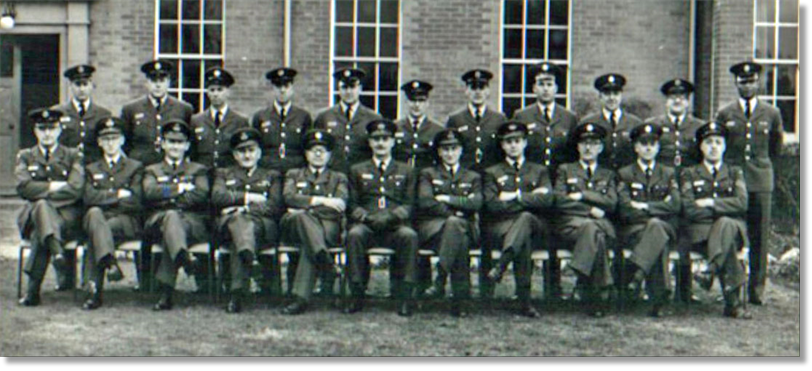
No.6 Senior Air Movements Course, RAF Abingdon, 1964
Rear: Sgt Pirie, Sgt Bullock, Sgt Mather, Sgt Titmuss, Sgt Lawrie, Sgt Rae, Sgt Matthews, Sgt Brigham, Sgt Hill, Sgt Bernard
Front: Sgt Fyfe, Plt Off Bowen, Sqn Ldr Perrin, Sgt Levy, Flt Lt Rowe, Sqn Ldr McNair, Fg Off Edisforth, Sgt Hopkinson, Sgt Bell, Sgt Millington
When I came across to the RAAF in 1977, the only Course I was required to re-do from my RAF days was the Air Movements School at AMTDU. This was quite reasonable, as, while in my later ‘Mover’ days with the RAF I had worked predominately on Hercs, they were the UK C130K variant with a UK-specific role conveyor system, whereas the RAAF sensibly stayed with the internationally-known 463L system.
The other significant change from RAF to RAAF were the other smaller types I’d have to be familiar with, Caribou, Chinook, Huey and the like. This was, of course, before the RAAF received the ex-QANTAS B707s, but that’s another story.
Arriving at Richmond and AMTDU, I was very careful that notwithstanding my previous years of experience with air movements with the RAF, I did not want to seem like a know-it-all smart a***, and indeed I just played it low key and took the course as it came.
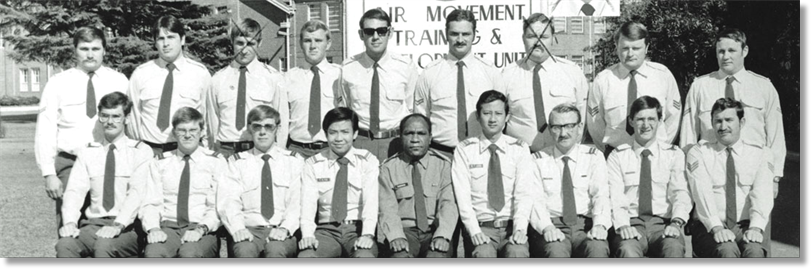
No.5 Air Movements Course, RAAF Richmond, June 1979
Rear: CPL Harrison, CPL Lee, LAC Carroll, AC Handley, CPL Day, CPL Donald, LAC Barry, SGT Lord, CPL Fischer
Front: FLGOFF Cameron, FLTLT McDonald, FLTLT Turner, LT Foo, MAJ Dademo, CAPT Leong, FLTLT Bowen, FLGOFF Eakin-Smyth, SGT Jackson
The one time I did call up race memory was on the subject of dangerous cargo instruction. WOFF AQM Shorty Heffernan was the senior SNCO instructor, and he and I had a lovely blue one time – though well outside the classroom and away from the other course members. Shorty was giving the lectures on dangerous cargo (DC) . The question of mercury came up and he just made one brief comment “Bloody mercury ….. just clinical mercury thermometers on AME flights ….. minimal quantities involved,” ….. blah-blah-blah. Almost a throwaway line about the very real hazards of mercury in aircraft. I thought, “Right, well, I’m not going to say anything now in class…..but…..” I waited till the instruction period was over and then talked to him outside the building, “Mr Heffernan, I think you’re a bit easy on the question of mercury.” I said, “You know, mercury spill in aircraft can be a major problem.” “Oh, bloody bullshit.” was his response. “Oh, okay.” I thought and backed off, but then couldn’t leave it at that as he was giving the DC instructions for all the rest of the course, too.
Anyway, I went upstairs to the AMTDU library and I said, “You get the UK JATE – Joint Air Transport Establishment – Reports, don’t you?” “Yeah, Sir. Over there on the far shelf.” I pulled out a JATE Report on the Cat 5 write-off of an RAF Britannia. One of those big mercury meteorological calibration barometers had been incorrectly packed, then also incorrectly loaded laid down on its side, and all the mercury – about 20 lb of the stuff - had spilled out into the aircraft hold on the way back from the Middle East. Of course, you know what happens with mercury and aircraft alloy….instant and catastrophic corrosion.
Nobody noticed the spill initially, but when a grumpy letter came back from the Central Met Bureau. “We can’t re-calibrate this bloody barometer you’ve sent to us ‘cause all the mercury’s gone” somebody dashed out to the Britannia and you could put your finger through the skin of the aircraft over the entire hold where the cargo had been loaded!
Fortunately the Britannias were coming to the end of their service life, but nevertheless that Brit never flew again. I took Shorty aside and I showed him the report, outside the classroom and away from the other students of course. You see, the JATE Project Officer in charge of the DC investigation was one Flight Lieutenant Len Bowen, RAF. I’d been one of the Investigating Officers looking into the damage to the aircraft and how it had occurred, so it was my signature on the bottom of the JATE Report about the dangers of mercury v. aircraft structures.
I don’t think Shortie ever forgave me for that, and even later when I was firstly Team Leader on MATU 1 and later, SMOVO Richmond and Shorty was back on one of the Richmond Herc squadrons as AQM Leader, our dealings were always slightly stilted. No very senior Warrant Officer AQM like to be proved wrong by an up-start Pommy Flight Lieutenant fresh off the boat!
The rest of the Richmond course was a breeze. We had a moment or two with our Papua New Guinea Defence Force (PNGDF) Major. He was a really lovely bloke, and despite being the most senior rank on the course, mucked in with all the rest of us. Unfortunately (a) he like a beer or three or four and (b) he had absolutely no idea whatsoever about air movements. If ever there was a ‘political pass’ it was his at the end of the six weeks. He went on to become the Director of Movements & Transport for the PNGDF.
I later heard, his clan fell out with the then-PNG President’s clan and he was banished to the Highlands.
The AMTDU Course finished in June 1979, with me achieving a ‘Distinction’ pass – well, I damned well should have considering my previous air movements experience – and I returned to my post as Senior Stores Officer, RAAF Base Laverton, sweating on the approval of my application to take over the then-new MATU ALT1 at Richmond at the end of my tour down south. Everything comes to he who waits, and in January 1980 I arrived at Richmond and MATU 1 – but that’s another story for another time.
Len Bowen
Canberra, ACT.
27 Aug 2019.

Subject: Memories of my Air Movements Training
Hi Tony
Just a little anecdote that occurred when I was at Abingdon doing my movements course in1968. It concerns that pony race beloved of all Brits, The Grand National. I chose three horses to bet on; Red Alligator, Moidores Token and Manifest. Reasons as follows - Red Alligator Russian thug in a book I was reading, Moidores Token as I had just finished reading Lord of the Rings and Manifest for obvious reasons.
I had hoped to get into Abingdon to put the bet on but unfortunately I had fallen foul of the SWO and was stuck on gate guard. Being sure that my hunch was right I collared one of the lads off my course (who will remain nameless but I’m sure if he reads this he will know who he is) and asked him to put two quid each way on them for me and for the price of pint he agreed and off he toddled.
Well, you can imagine my reaction when the first two came in 1st and 2nd at odds of 100/3 as I recall. I waited for said comrade to return with my betting slip but like McCafferty he was nowhere to be found.
On returning to the billet I found aforesaid miscreant smashed out of his brains on his pit. Needless to say strong words ensued especially as I found out he hadn’t even put the bets on but had had a nice time on my money.
Fate intervened for him because he was slung off the course and RTU'd as not being good enough to become a mover. Never met him again - probably just as well.
The morale to this tale of woe: place your own bets and don’t run afoul of the SWO!
Cheers, Peter
From: Michael V O'Brien, Corinda, QLD
Subject: Memories of my Air Movements Training
G’Day Tony,
Reflecting on things I learned from my Movements Training and Career:
There I was at the end of 2004, sitting in a pointy end comfy chair of a QANTAS B-747 on my way home from Burundi for some leave from the depths of deepest – I was working for Patrick Defence Logistics, who had the contract to coordinate and manage the deployment of the Reinforcement Battalions to the UN Mission in the Congo [MONUC].
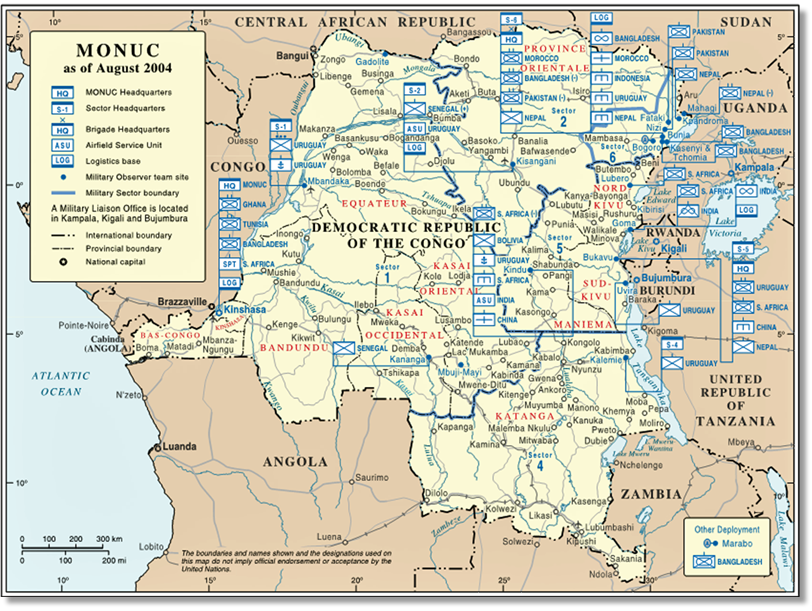
I had arrived in Kinshasa, capital of the Democratic Republic of the Congo [which, by the way, was/is neither democratic or very republican], on the 18th of November and after being re-UN’d with a MONUC ID and Driver’s Licence I was whisked away to do some of that planning and liaison stuff, and be introduced by the MONUC Chief over [with whom I’d worked when we were both part of the RAAF Movements mob, and who had transferred to the UN after our UNTAC tour]. We may also have enjoyed a local ale or three, amusingly named “Primus”.
Kinshasa was previously known as “Léopoldville”, in honour of His Maj., the King of Belgium, when the Congo region was discovered by the white explorers – the Congolese themselves had not actually lost it, but the Europeans were renowned for “finding” bits of the Earth in those days.
The following morning, not so bright or early, it was via UN air to Kisangani [previously “Stanleyville”], then onto Bukavu [previously Costermansville], in the East of DRC.
The overnight stop was required to encompass more planning, some not-so-quiet quiet ales, with a serve of ‘frights’ occasioned by the local ‘adversaries’ contesting bits of the City underneath which we were sited, altho’ the fireworks show was ‘interesting’! And, bugger me if the following day it wasn’t another not so bright but bloody early start on the road from Bukavu to Uvira [no previous noted], on the North Western edge of Lac Tanganyika and next to the border with Burundi, by four wheel drive for about 180kms in three or so hours, and then 20 mins in an Mi-17 helicopter across the lake to the bustling hub of the capital of Burundi, Bujumbura.
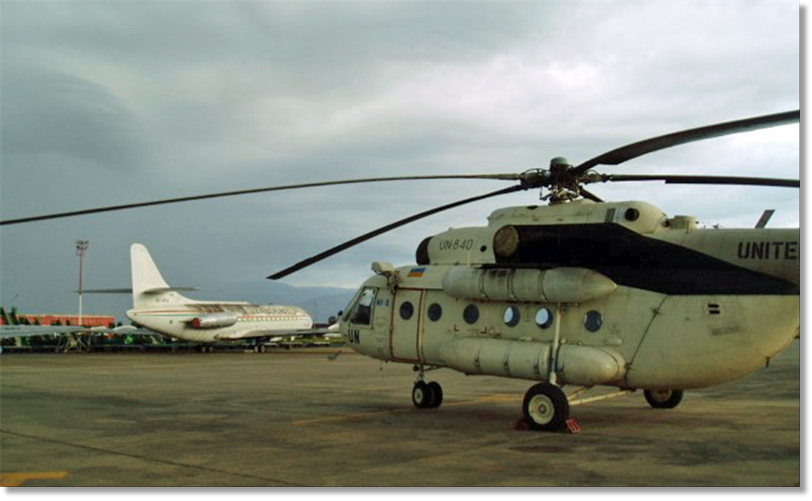
UN-840 – a contracted Mi-17, admiring the beautiful lines of a venerable French Lady
For the next 27 days, I was responsible for coordination and management of the unloading of Pakistani Battalion equipment and troops, and Indian troops, for deployment into the UN Mission in the Democratic Republic of the Congo – that little tropical paradise which the Belgian Colonials so nicely looked after for about 80 years, and which now is trying to sort out its problems that are racially- and economically-generated.
You may have heard that there had been numerous incursions into DRC by Rwandan troops during the 2003-04 era, supposedly looking for remnants of the Interhamwe who got a bit excited in 1993 and did a bit of racial cleansing, African style – the troops and equipment we were unloading from the UN chartered Antonov 124s were being deployed into Eastern DRC via Bujumbura to augment the MONUC Mission’s already stretched assets to prosecute what had become a “Chapter Seven” peace enforcement task. The personnel were airlifted to Bukavu and the cargo/equipment was cross-loaded onto the most motley-assortment of trucks I've ever worked with, and road moved into the Congo, via the road we had taken three or so hours to drive – except the [rapidly deteriorating] condition of the road meant that the truck/trailer combinations were now taking at least three to four day to cover the 200-odd kms!
This meant that our aircraft unloading efforts far exceeded our truck-loading/convoy dispatch capabilities, to the extent that I spent a week more in Bujumbura than originally planned. The Antonov’s were averaging 90tonnes per flight – think of eight 20foot shipping containers and half a dozen 5tonne trucks and/or APCs and you’ll be able to envision the size of the transport task for each aircraft, and we were receiving one aircraft a day, so we quickly ended up with a sizeable backlog of stuff not going anywhere until the trucks returned – when I left we still had about twenty truckloads to dispatch and there were two more An-124s to come!
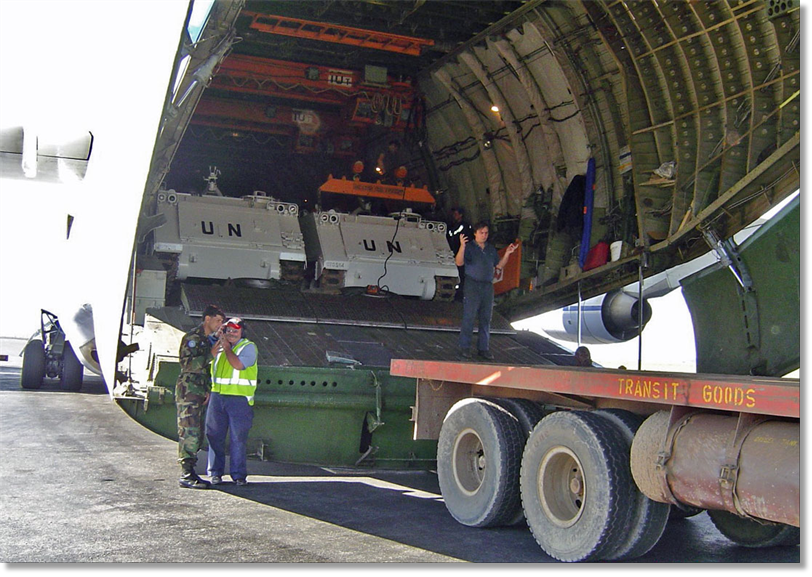
”No, let the loadmaster guide the truck-driver – he doesn’t speak Swahili either!”
I alluded earlier to the lack of storage the MONUC Mission had within the ONUB [Burundi] Mission, and one thing I learned in my Mover’s training was that opportunities abound, if you can be flexible, to which end I was able to arrange the use of a not-yet-occupied warehouse site planned for the ONUB Logistics element – that I had previously worked with the ONUB Chief Mover when he was an Army Mover with me during UNTAC may have helped … a bit … allegedly.
We had early starts, 0600, as soon as the 2300-0600 curfew lifted, and generally finished the outside part of the work – all done in the open as there was no covered facility big enough or available to do otherwise – at dark/1830-ish, then spent a couple of hours trying to produce and disseminate sitreps, amidst very ordinary internet communication – then a couple of drinkies and dinner and usually retired by midnight – so it was a bit of a shock after eight months of semi-retirement [actually, unemployed, if you must insist!] to once again be so gainfully employed; long, hot days … what is that saying about mad dogs? Flexibility was certainly an asset, to be sure!
I was scheduled to depart Bujumbura on Thursday 16th December, for Kinshasa for a couple of days of debriefs with the MONUC Mission head-shed, and intended to travel on the UN aircraft allocated to move the Pakistani Sector Commander [BrigGen someone] and his contingent who arrived that morning to assume their duties – and, naturally, after the whole month’s worth of aircraft arrivals and onforwarding going fairly well.
A selection of the contracted surface-movement assets available
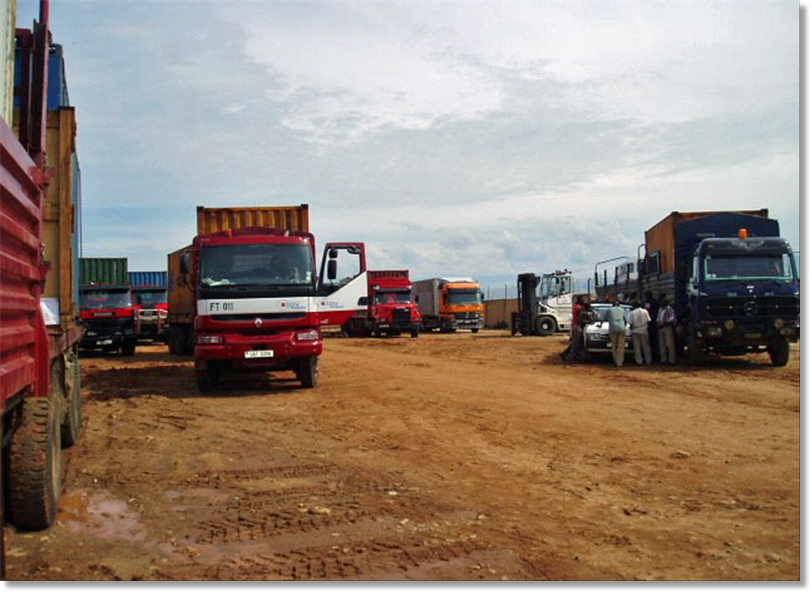
Thursday turned into a packet of poo tickets as the weather in Eastern Congo towns of Kalemie [prev. “Albertville”], Bukavu and Goma, all the locations where MONUC’s eastern region aircraft are based, got really bad, really quick, and as quick as flash … no aircraft arrived until about 1700 when a C-130 appeared but which was unable to do anything until the next day – and there we were with 212 recently-arrived on an earlier contracted MD-11, and now very wet and disgruntled MONUC PakBatt personnel for whom we had to find accommodation – fortunately the Pakistani Engineering Battalion of the Burundi Mission [ONUB] could accommodate the General and his thirty or so staff officers, and that was just down the road, but the soldiers got sent to Cibitoke, to the PakInfantry Battalion 60-odd kms north on the Burundi/Rwanda/Congo border; naturally, their baggage stayed in the trucks in Bujumbura.
At least the Paki General got to stay with his own this time; on a previous, similar, minor hiccup we dispatched a senior officer and his hangers-on to Bukavu, but because of too much weather the Mi-17 had to divert to Goma for the night, the Sector HQ location of the Indian Battalion [and which had to be rapidly reinforced recently when the Rwandans got a little bit enthusiastic and somewhat into the Congo!].
Friday dawned bright and sunny in Burundi and altho’ Bukavu was looking a bit shaky, the South African SAFAIR L-100-30 crew agreed to try to get into Bukavu, and I took the opportunity to leg it with them, as a flight deck ‘supercrew’.
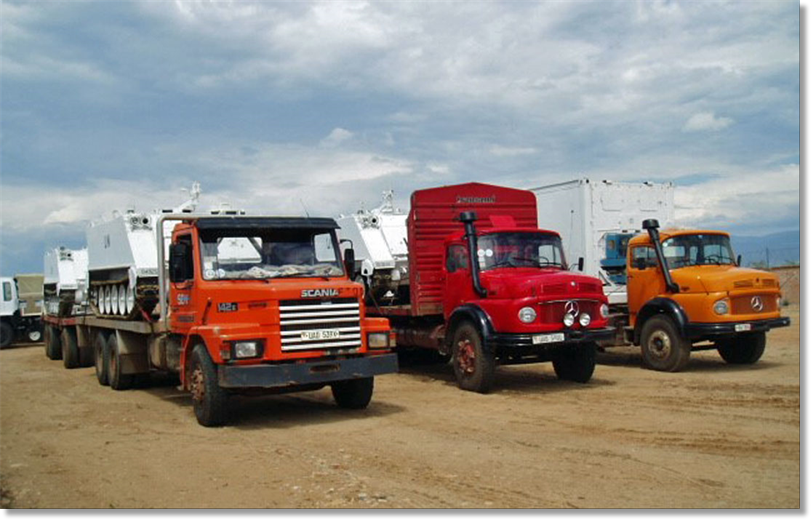
Accepted Convoy Procedures … this was the last time I saw this after they left the compound
The General and his entourage sat in the blunt end with some four tonnes of their baggage! And so commenced a trek to get OBie to Kinshasa for my scheduled departure Sunday to connect to this QF B-747 to get me home by PM 21st … a trek worthy of Doctor Livingstone’s efforts some eighty or so years gone. Both my PDL boss and Neil, then Chief of Movement Control in the MONUC Mission, had promised SWMBO that I’d be home for Christmas, and By Gum they were going to make it happen!
Get your atlases out and follow the bouncing OBie, kiddies. The trek, with times Local:
0905-0930 Bujumbura to Bukavu, no sweat, on the L100-30;
1235-1515 Bukavu to Entebbe [hint: look East, into Uganda], in the Sector Commander’s little Beech;
1630-1710 Entebbe to Kisangani [hint: head back towards the West], in the UN’s B-727, and then,
1735-1805 Kisangani to Kinshasa, still using the B-727, but the price was right!! The benefit of being a UN Contractor was that I could swan around Africa on UN aircraft for free and get paid for it!!
The day I spent in Kinshasa gave me the opportunity to see how differently the two UN Missions are viewed by the citizens of DRC and Burundi – and perhaps try to analyse why. MONUC has been around for about five years in its present form, but since the early ‘60s in some form or other, and is supposed to be disarming and separating the factions, repatriating refugees etc., and is to eventually hold ‘real’ elections like UNTAC did in Cambodia in 1993, and is showing considerable inability to achieve any of its mandated requirements – mind you, the mob contesting ownership of the Eastern part don’t seem to know whether they want to be Congolese, Rwandan or Ugandan, with a few who sympathise with the Burundians as well – and they are all ethnically different and speak different languages and had different colonial masters.
Digressing for a moment, 90% of the work I did was using French language so I had to come up to speed pretty quickly and still maintain that if others had to work as hard to understand me as I had to in order to speak it then we were about even. Anyway, the French word for Colonial is “colon”, and that’s pretty much how the Congolese see the UN! Our convoys of [civilian] vehicles etc., regularly got stoned as they pass thru the villages in the Congo where the Paki and Indian Peacekeepers will be deployed; but I suppose it’s better that the little darlings sitting under every bush with an Ak-47 are throwing stones and not shooting at the [civilian] trucks.
My ‘Office’ parked in front of the Bujumbura International Terminal

The Burundians, however, where the ONUB mission is located, which had a similar role as MONUC, was only five months old, and had had some measures of success: during the first couple of weeks I was there two important ceremonies had been held: the President declared an “Official Day of Reverence For the Trees” [make what you will of that, but this region was the habitat of the Mountain Gorilla], and the UN received some hundred or so weapons handed in as part of the cantonement process.
The people with whom I worked and met in the day-to-day activities seemed relatively happy, notwithstanding being deprived of most services and utilities we take for granted, and the kids were genuinely happy and cheerful, and waved and saluted as [the hundreds of brand new] UN vehicles passed by. My ‘office’ was a brand new Toyota Prado, most often located at the airport, but the bloody thing drove on the wrong side of the road all the time and the gear shift and handbrake were also on the wrong side of me – and all the other traffic there showed a remarkable lack of road sense by constantly wanting to drive on the side of the road I was using!
The work itself was straightforward, consisting of the aircraft unloading/loading and assessing requirements on the fly, liaising with all the airport and other minor and major/Colonel officials – and telling them in a manner that they would appreciate the importance I placed on their concurrence of my plans/requirements. Due to the intricacies of the aircraft over-flight clearance issues and denials of same by some of the countries, the same ones who are bleating loudest about the UN not being effective, the aircraft arrivals often got cancelled with a few hours’ notice. My practice was to phone the UK Operations Centre each morning at 0430 my time to ascertain whether the aircraft had left its’ tech stop at Djibouti, and what was its’ anticipated arrival time into Bujumbura [if it had left Djib it would be on the ground for me within the next three and a half hours]. On the strength of that info I’d either confirm or switch off previously made plans – and tradition/etiquette required that every discussion commenced with at least 10-15” of polite conversation about the weather, the family, the state of the economy and the inevitable bleat about how expensive everything was these days, and couldn’t I see my way clear to assisting, etc, etc, and it looked like it would be another hot day and a cold drink would be lovely.
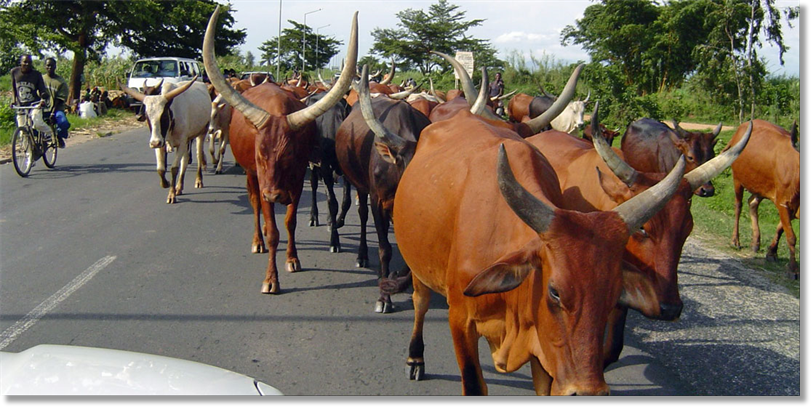
Bujumbura mid-afternoon peak-hour traffic endeavouring to get home before the Curfew
The trucking side of the show was the area that presented the most difficulty as the contractor appeared to have slightly over-assessed the capability of his assets, and we quickly ran out of trucks and, as mentioned above, had to consolidate the equipment in a new yard being built for the ONUB Logistics Base – gratefully, I accepted their offer of help.
The increasingly-regular rain made the work even more interesting as the Pak Engineers had laid some gravel and minor road-base but had not compacted it well enough, nor had they used enough of the various sizes of rock to set in to the clay/fertile volcanic soil [see, I did learn something from my time as Manager of Monier Group PNG - Flexibility, hey!], and the ensuing quagmire made the work of loading the trucks with APCs [13 – 15tonnes], vehicles various and shipping containers up to 18tonnes, very interesting indeed!
The trucking [SDV] contractor’s man on the spot, Eugene, was a good bloke, a Ugandan by birth who had relocated to Burundi when the troubles in Uganda and Rwanda made things difficult for his family – as luck would have it Burundi’s wheels fell off, but as you’ll see from the pic he was able to look after himself – he gained the nickname ‘Shrek’, given by the Pakis, but they must be colour –blind!! His English, fortunately, was pretty good coz’ my Swahili was average at best, and he reckoned I needed to improve my French, so … He had a good personality, but didn’t take any crap from any of his drivers, and I enjoyed working with him – the other bloke in the picture is a UN Volunteer, East Timorese, ex refugee who worked with the Air Terminal Squadron blokes when we were in Dili in late 1999: Antonio De Oliviera, whose family have now returned to Dili and are rebuilding their lives.
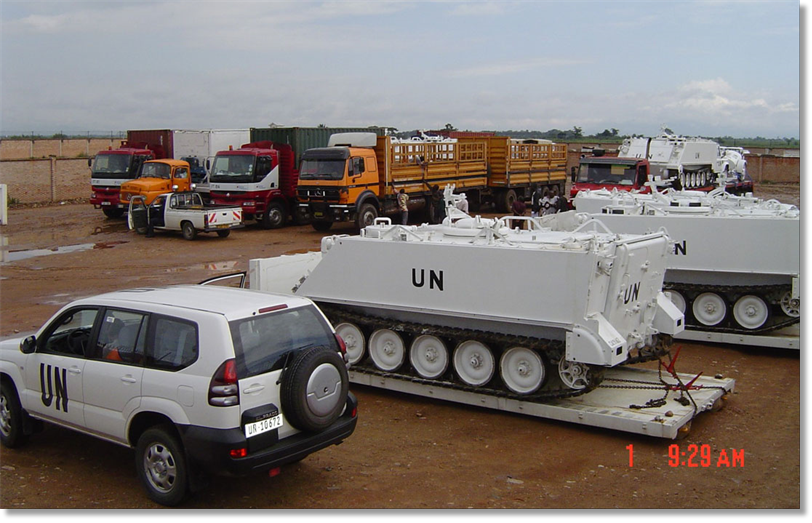
Convoy pre-departure preparation – one eye on the weather!
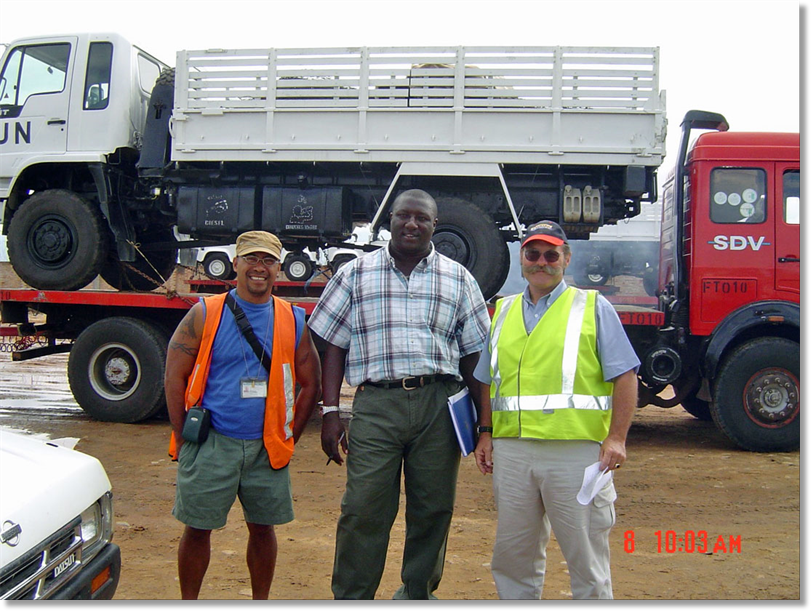
Antonio, Eugene and OBie … another Convoy sorted and about to depart
As I mentioned earlier, I was scheduled to return to Kinshasa 4th of January ‘05, for a couple of days’ admin, and then back to Burundi to prepare to receive the rest of the Reinforcement Battalions, scheduled to commence 8th Jan ‘05, comprising two PakInf Battalions and one Indian Aviation Squadron which would supplement the Mi-25 ‘Hind’ gun-ships they already have there, and which, under the UN Charter’s Chapter 7 Peace Enforcement mandate the Mission had, had already been used in anger!
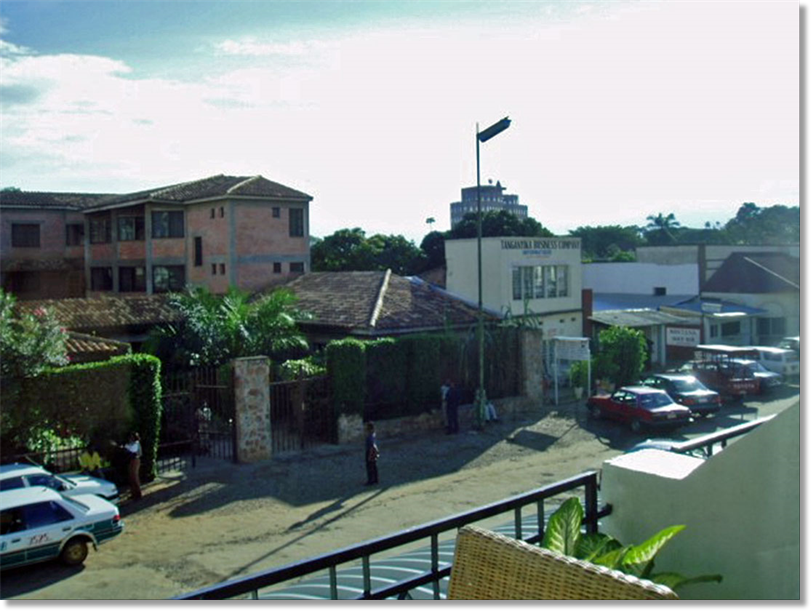
I was accommodated at the Hotel Amahoro, in one of their flash USD50 rooms [with fridge, aircon if there’s electricity, and hot water, usually, except when there’s no electricity], with a most pleasant view of the bustling, not-to-be-confused-with-a- Karaoke-bar revivalist-centre [how embarrassment!] across the road.
So, what did my Movements Training teach me … the ability to be flexible, which will enable ‘on-the-fly’ amendments, mostly. And to keep meticulous records, with photos if possible!
Cop ya,
Obie

Subject: Memories of my Air Movements Training
Hi Tony,
Years before I joined the RAF, most aircraft were not (or so it seemed) ‘Tricycle’ undercarriage. Airman Apprentice air experience and training, wherever, was in ‘Taildragger’ airframes. Then with the advent of airframes of Cargo and Pax carriers like Beverley, Britannia, Comet, Argosy and Hercules, to name just a few, load carriers generally became more pleasing to work on.
But getting detailed for Movements training in 1964 on No 2 Junior Movements Course at Abingdon was a surprise to have instruction by Sgts Brain and Wickham loading Hastings aircraft. Not just winching and inching Landrovers and trailers, but with the expectation of heaving flat-floor loads up the sloping floor.
Good character building yes; on reflection no joke. Luckily I never had to load a flat floor Hastings in anger, just a considerable passenger complement of Pakistanis with their immense volume of baggage on their rotation exchange to and from Gan and Karachi in 1965.
The Beverley training was a lighter relief as well with the ’novelty’ of trimming the aircraft both horizontally and vertically.
UKMAMS Training followed after an interval of 13 years in 1978
Thanks and regards Tony
Gordon


Royal Air Force and Royal New Zealand Air Force personnel will be allowed to grow beards for the first time ever. The change in the facial hair policy will take effect from 1st September this year.
Daniel Massicotte, Amherstview, ON
Craig Heath, Lincoln
Welcome to the OBA!


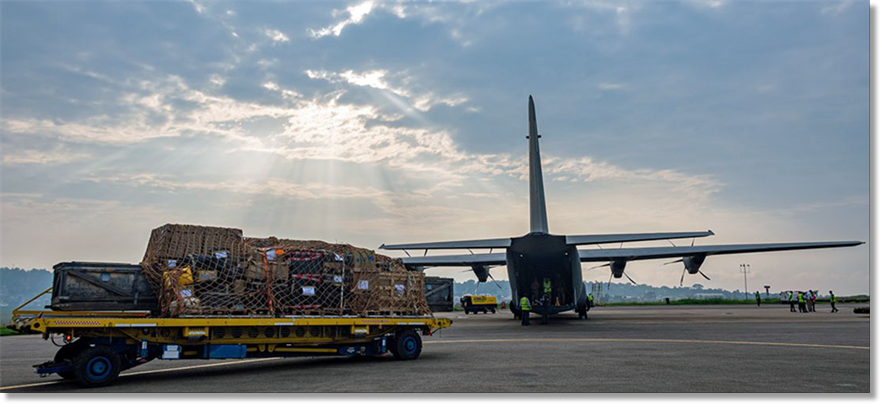
Cargo destined for the United Nations Mission in South Sudan (UNMISS) waits to be loaded at the Entebbe airport onto a CC-130J Hercules aircraft as part of Operation PRESENCE-Uganda, the Canadian Armed Forces tactical airlift support to the United Nation’s peacekeeping operations in Africa on 21 August 2019.
Royal Canadian Air Force
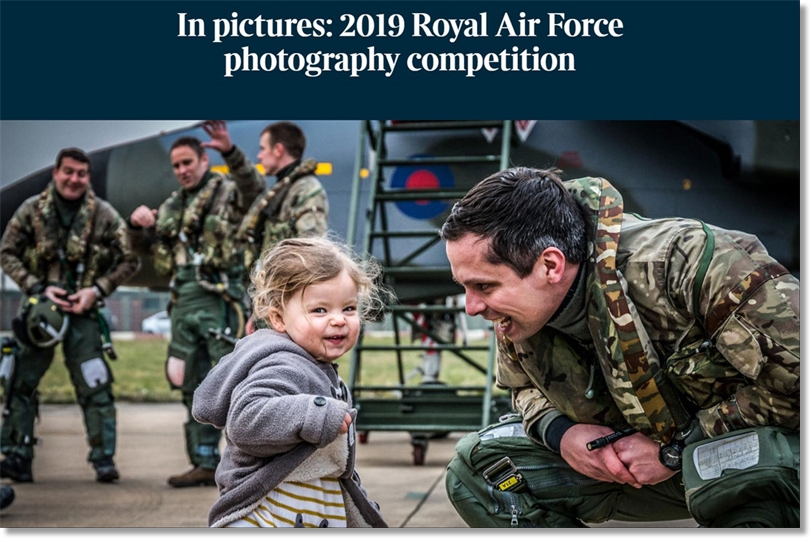
A Tornado pilot celebrates his final flight at RAF Marham with his daughter
LEE MATTHEWS/RAF
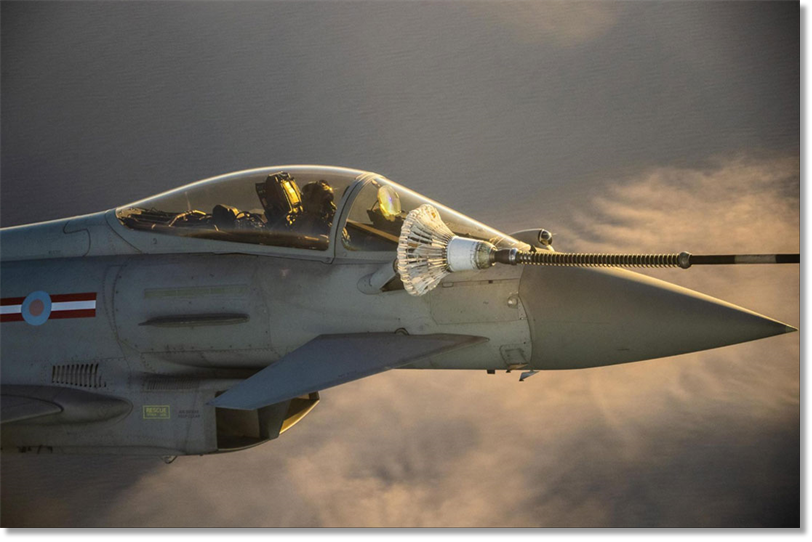
A Typhoon is refuelled by an RAF Voyager in the skies over the Falkland Islands
PAUL OLDFIELD/RAF
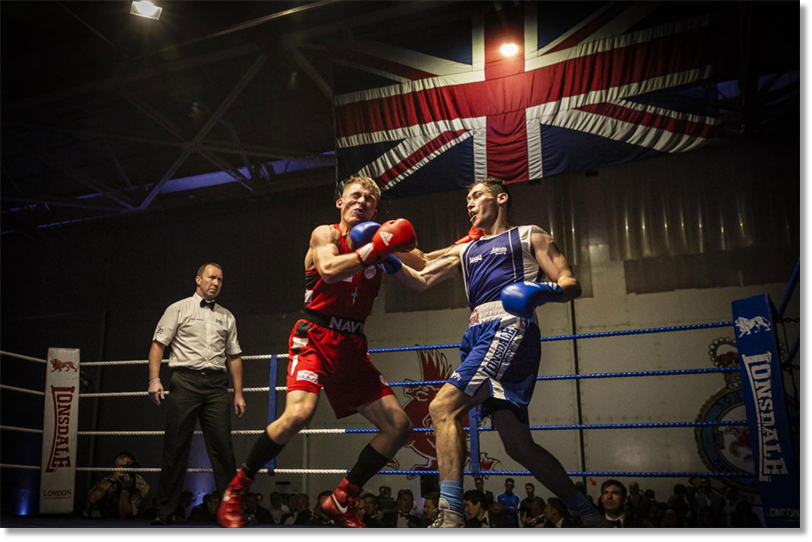
Senior Aircraftman Arran Devine uppercuts a Royal Marine captain at RAF Odiham
ROB TRAVIS/RAF
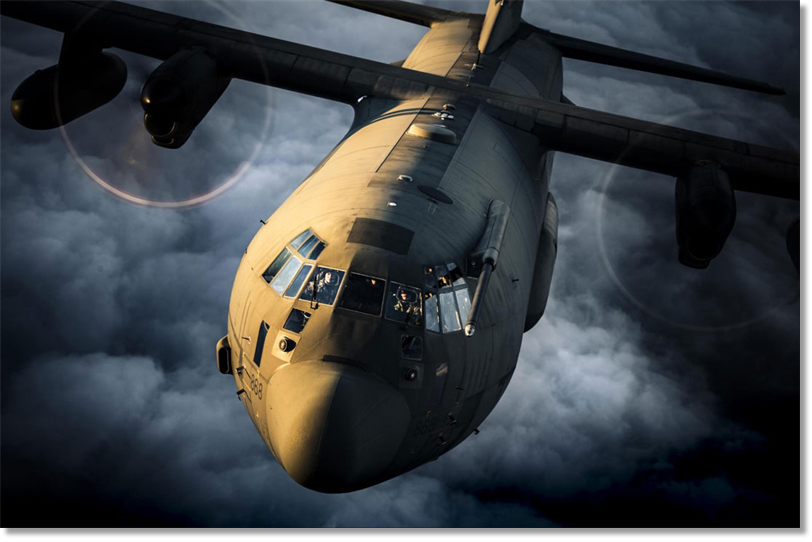
This photograph of a C130J Hercules was shot from the ramp of a second aircraft during a training sortie over Abingdon, Oxfordshire
LEE MATTHEWS/RAF
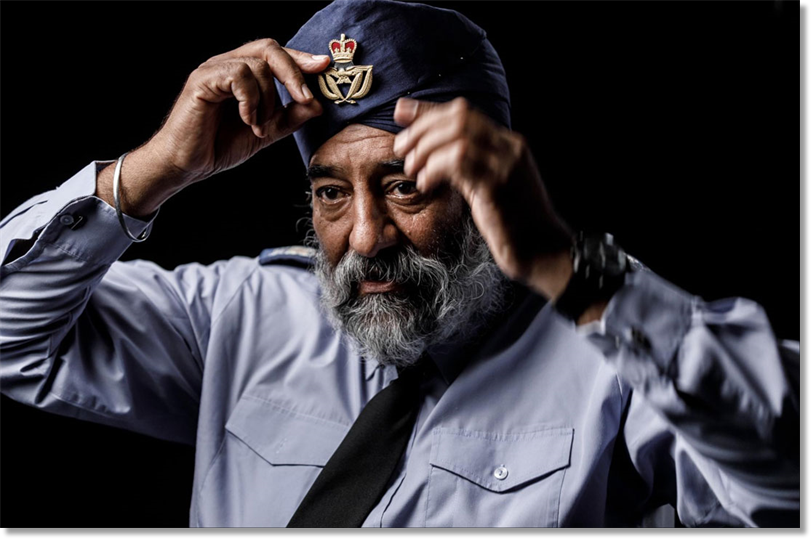
A portrait of Warrant Officer Balbir Flora taken for a recruitment campaign
PAUL SAXBY/RAF

A long-exposure shot of Senior Aircraftman Dan Smither outside the Bullring in Birmingham city centre
IAIN CURLETT/RAF COSFORD
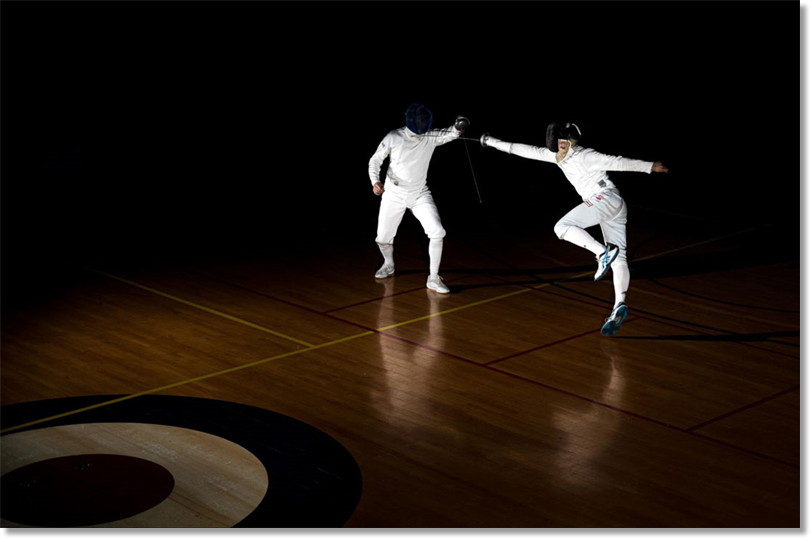
Members of the fencing club at RAF Cosford practise in the station gym
CIARAN MCFALLS/RAF CONINGSBY
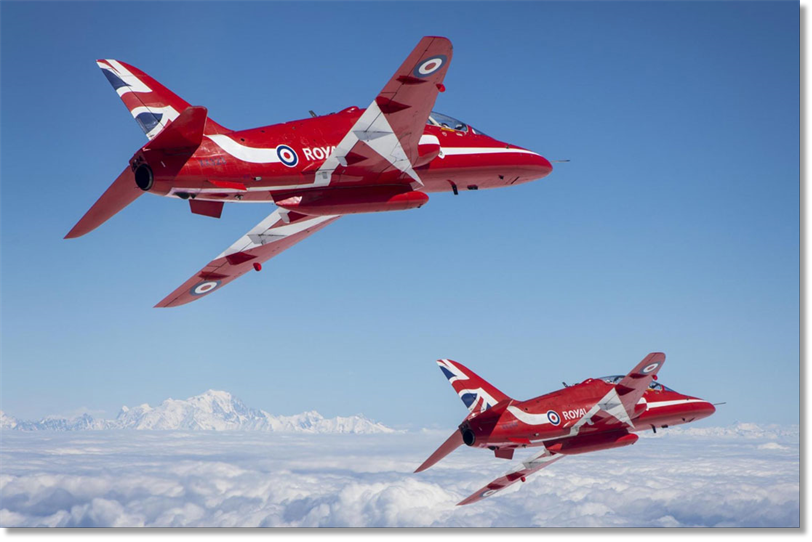
Members of the Red Arrows aerobatics team fly past the Alps en route to Greece
ASHLEY KEATES/RAF

Corporal Sarah Partridge was introduced to wakeboarding in the RAF and went on to represent Team GB
RACHEL MALTHOUSE/RAF
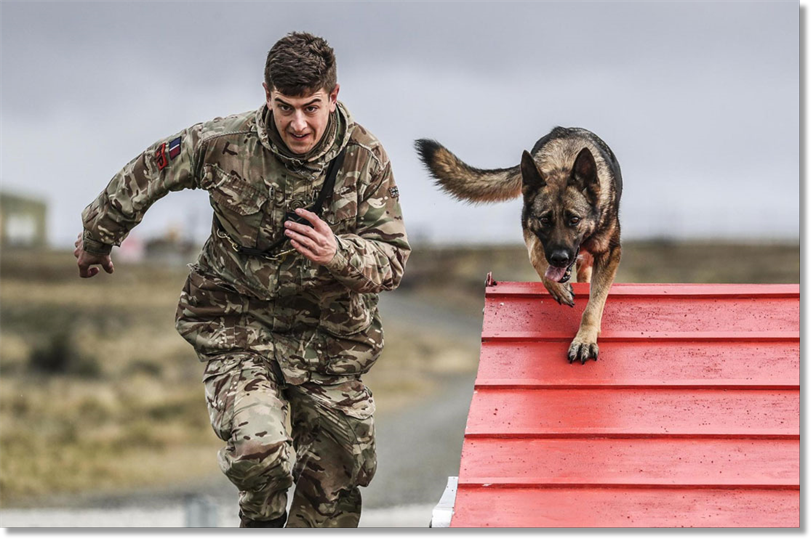
Corporal Lloyd Weatherly competes against Police Working Dog Elanna at an event dubbed the K9 Olympics
PAUL OLDFIELD/RAF
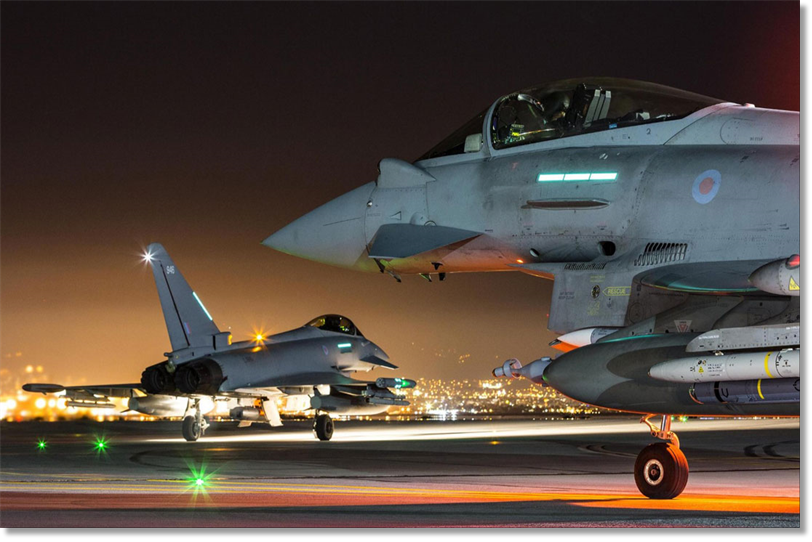
Typhoons prepare to depart from RAF Akrotiri on Cyprus for an Operation Shader night mission against Isis
TIM LAURENCE/RAF
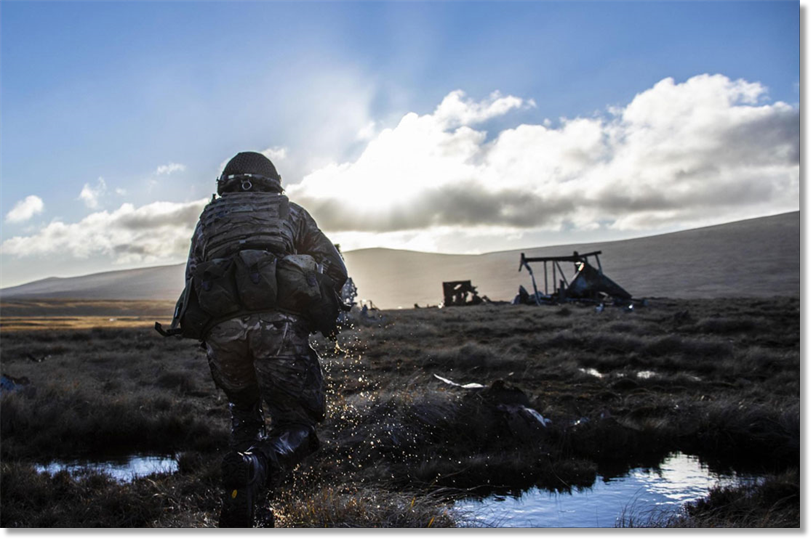
Soldiers from 3 Parachute Regiment take part in live firing exercises on the Falkland Islands
PAUL OLDFIELD/RAF
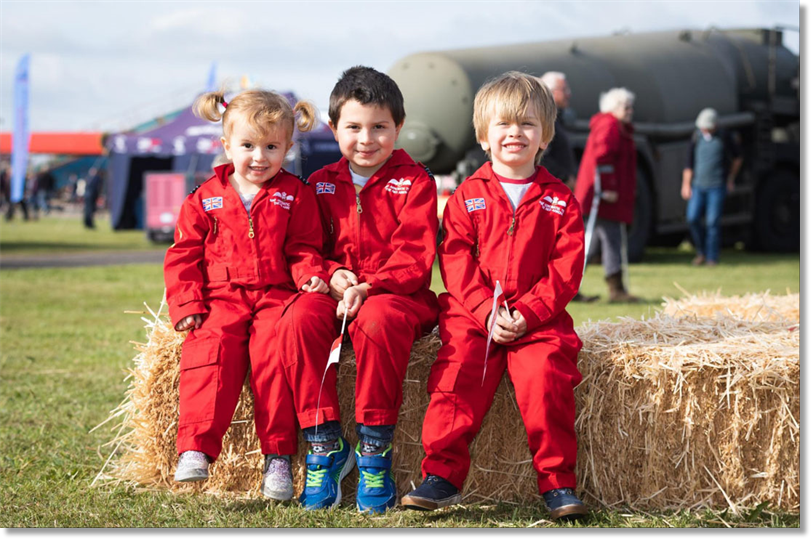
Members of the ‘Red Sparrows’ patiently await debriefing at the RAF Cosford airshow in Wolverhampton
HARRY ROBERTS/RAF COSFORD
The Times

Subject: RTW co-pilot
Michael Cocker – RTW co-pilot
A real blast from the past in the shop this morning. Wg Cdr (Retd) Steve Wrigley, former OC 47 Sqn. I haven't seen him since he taught me to fly the Herc during Nobby Clarke's Swan Song in Nov/Dec 1984.
We were on a West-about Global, going U/S and stopping everywhere. The route took us across Canada and the USA to deliver a Scorpion CVRT which had some mods to use in a bomb disposal role. We dropped this off at Los Angeles Intl Airport, then continued across the Pacific via Honolulu (U/S approx 4 days in Fiji) then into Christchurch where there was about 3000lbs of freight to pick up. There was a MAMS team in Christchurch already and they offered to load the aircraft for us as we'd been flying all day! I may be wrong, but I think Steve Moore was one of the team there.
The Co-Pilot had a multi currency imprest and wasn't interested in flying so I spent nearly 40 hours in the right hand seat, getting what the Captain called "Professional Instruction"... although I find that difficult to believe from the RAF ;-)
From here the aircraft became a Nav trainer, onto Sydney where we were U/S again for a number of days (can't remember how many) , then Singapore, Colombo, Bahrain (U/S with a double prop change), Palermo, Lyneham. Steve Wrigley said he would consult his log book and pop back in to the shop with the info. An interesting thing he remembered from that route was the appalling weather across the Pacific at the time - apparently the crew had a lot of discussion about routing, fuel and available diversions. The aircraft seemed to be a little temperamental as well, with radio/avionics issues and oil leaks..... and he still let me fly it..
Steve actually remembered the task as he was pushing to get back for the Sqn Christmas review - we never made it as a 2 week task turned into about 5 weeks.. I think at one stage, between Darwin and Singapore I managed to side slip the aircraft enough to get Nobby out of his hammock down the back. Great memories of a fantastic trip. And even better news... he bought some fishing tackle from the shop.. :-)
Cheers,
Mick
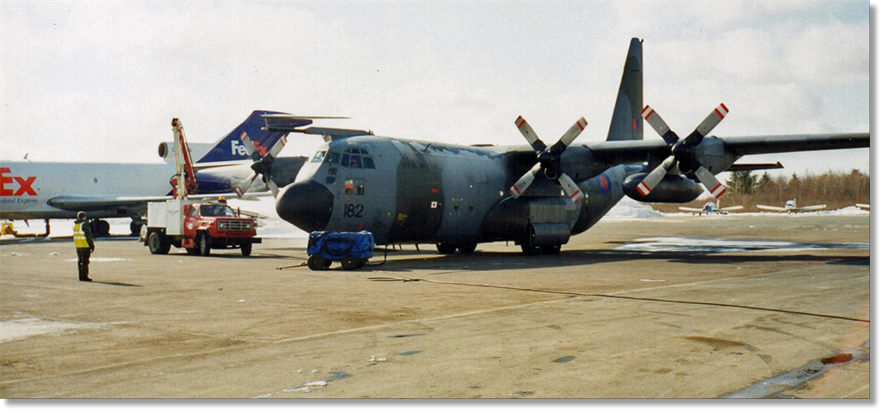
RTW Herc XV182 at Halifax International Airport, Nova Scotia

On Friday 26 July 2019, Air Chief Marshal Sir Stephen Hillier stepped down as Chief of the Air Staff, handing the command to Air Chief Marshal Mike Wigston in a ceremony before RAF College Hall.
“I’m honoured to be the new Chief of the Air Staff. The Royal Air Force I joined in 1986 was very different to the one I’m now privileged to command. We’ve seen a huge amount change in that time, but the constant has been the brilliant people from all walks of life who serve the Royal Air Force with energy, commitment and great pride."
The ceremony, attended by over 400 guests, comprised a unique parade and the handover of the CAS Sword, which bears on its blade the name of the Chiefs of the Air Staff and the year they took office.
From: Mike Stepney, Stewarton, East Ayrshire
Subject: UKMAMS Support for the Red Arrows
Hi Tony,
Your recent comments on FaceBook regarding the Red Arrows flying over your apartment in Canada, got me to thinking about UKMAMS support for the Red Arrows. UKMAMS were not involved with the Red Arrows until mid-1987, and then only after an incident concerning damage to a Lyneham C130.
UKMAMS – SUPPORTING THE RED ARROWS
UKMAMS has not always supported the Red Arrows (Red A). In fact, although the Red A had been entertaining crowds since 1964 with the Foland Gnat, and from 1979 with the BAE Hawk, it was not until 1987 that UKMAMS became directly involved with supporting the Red A display team.
The team had deployed to more than 40 countries, and taken part in multiple performances over a period of 23 years without formal air movements support, so why suddenly did UKMAMS get involved in the summer of 1987?
At the time, I was the training officer at UKMAMS and mid- week in the middle of June, I was called up to see Wg Cdr Movements. He handed me an incident report concerning the damage to a C130 Hercules which had returned to Lyneham from a Red A deployment to Germany/Italy the previous weekend.
The report indicated that diesel fuel had been spilt on the aircraft floor and that the amount was considerable, necessitating the removal of areas of the aircraft floor panels to deal with the contamination. Whilst the report mentioned that the diesel had leaked from a 200ltr drum which had been stowed upright on a pallet and secured by strops, it did not clearly identify how or why the drum had leaked.
Stn Cdr and SEngO Lyneham did not like their Alberts doused in diesel fuel so I was ‘volunteered’ to report on the Saturday morning with passport and 3 days kit to accompany the next scheduled Red A support aircraft up to Scampton and monitor all loading/unloading and in-flight handling activity for the period of the detachment.
This display support aircraft would stop in Northern France, Jersey and Liverpool. The aircraft was in a mixed pax/freight configuration.
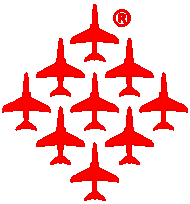
I was given a telephone number at Scampton (Red A Admin) and advised them on the Friday morning that I would be accompanying the aircraft for the duration. Unfortunately, I could not make contact with the Red A Det Cdr, who I was advised was in meetings all day. I did managed to track down the one ‘Movements’ trained individual who was in charge of all load prep, and loading/offloading for each Red A program; he was the squadron supplier, an SAC with a Loading & Lashing certificate (SAC LL), and I advised him of my involvement.
Ten minutes after completing my call, I received a return call from the Red A Det Cdr (the Sqn SEngO), a Sqn Ldr. I was advised by him not to board the aircraft at Lyneham the following day as I was not wanted or required on the detachment. I passed this curt message up to Wg Cdr Movements, who in response advised me to report as advised the following morning - Group was now involved! This was shaping up to be a very interesting weekend I thought.
On the Saturday, I met and briefed the C130 crew on my objectives for the weekend and all were extremely supportive (especially the Loadmasters), and appeared happy to have me along. On arrival at Scampton, I received a different reception!
I went looking for the Red A Det Cdr and found him in the hangar where I introduced myself. He refused to shake hands! Turned to me and said that if I delayed the departure of this aircraft from its assigned schedule, I would be held personally responsible! Nice start to the deployment I thought. My response to that jibe was that if the aircraft load was correctly prepared, loaded and secured in the time allotted, then there should be no requirement to change the itinerary. I also advised that I was more than happy to assist and advise his loading team, but I was not prepared to sanction sloppy or dangerous loading practices and would stop loading/unloading here and down route if deemed necessary – Sir!
I walked back out to the pan.
I requested a copy of the load plan from the SAC LL and was advised that there was a list of freight for loading and that the support team of techie loaders all know where it goes! The same plan is used for each detachment. Right then, every load is the same? No, but any changes to the load are minor and those that are, get documented as necessary.
A check of the final load tie-down and the completion of the trim was being left to the Loadmaster.
With the limited time available before chocks, my intention was to focus mainly on the actual loading technique and tie- down effectiveness and spend the rest of the flight time going through the documentation.
The first main ground equipment item to be loaded was a Houchin starter generator; they were loading it on A frame first. A guy walking backward steering the front wheels up the toe ramps whist someone drove a land rover at the rear (front bumper removed, and a railway sleeper attached) to push the generator up the ramp! Strike 1. No one marshalling and no chocks!
Strike 2. Stopping the loading I asked why they were not using the a/c winch. Their response indicated that it would take too long and that they always must do it this way to get it loaded quickly between shows, so the aircraft can depart on time!
I called in the loadmaster and got him to set up the winch and we loaded the Houchin. I requested a quick look at the Houchin tie-down scheme; they didn’t have one! I asked them to provide the axle weights; they had to contact their ground engineering section to find out!
Strike 3. Numerous squadron techies were employed positioning the load to the rear and one side of the a/c ready for loading. I reviewed the load, and there were a few minor issues that I drew their attention to and to their credit, they quickly fixed the problems. It appeared that they knew what they were doing, but can’t appearances be deceptive?
As I observed the loading and assisted where necessary, I noticed that over time, the support crew filtered out and dropped their baggage on a wooden pallet at the entrance to the hangar. Included in this was the display team’s personal baggage, so quite a pile. The baggage was earmarked for the ramp, but I could not see any weighing device, so flagged this to SAC LL. I was advised that baggage was being weighed and details entered on a tally sheet in the hangar!
No check weight facility was evident for the load and no one checking if all bags were being weighed. In addition, they were using old weights from previous detachments for the freight and had no facility at hand to check-weigh large or bulky items like a pallet full of baggage, large containers or ground equipment.
Strike 4. There were three techies loading and securing several laycon containers flat floor with strops. They used floor points much further apart than necessary and on questioning this tactic I was advised that they use the space under the strops to store their baggage. Although the total baggage load was earmarked for the ramp it appeared that most pax kept their bags with them whilst on route. I arranged the laycons to be stropped correctly with suitable dunnage as a base. Bags would be on the ramp under the net for take-off and landing.
Strike 5. Watching as they loaded the 200ltr drums of various liquids (the cause of the incident the previous week) I noticed that they were using large green plastic drip trays to stand the drums in. There were liberal amounts of absorbent sorbosil silica grains in each tray to catch any spillage. Thin wooden strips were positioned between the bottom of the drip tray and the a/c floor, and the drums were stacked upright. There was no contact between the drums and the dunnage, and even with the strops fully tightened, I could move the drums as they slid on the plastic drip trays.
Strike 6. I briefed them on the correct method of moving and securing the drums on the a/c and they re-loaded and secured the load as required.
On questioning their loading/tie-down technique, I was advised that at air shows, they must access the diesel from inside the C130 and carry it out in smaller containers to service the Hawk aircraft. I asked to see the rules and guidelines/dispensation for decanting flammable fuel on-board, no one could provide this.
Strike 7. At this point, I was satisfied that although some of the original loading was suspect, the actual re-loading and eventual tie-down was completed to a satisfactory level. The Loadmaster agreed. My next phase was to monitor all the off-loads/on-loads during the weekend at the different airheads.
I had made some preliminary notes regarding my observations during loading and attempted to brief the Det Cdr on my findings. Unfortunately, he was not available, and I subsequently discovered that he had elected to take a back seat in one of the Hawks to the first display bypassing our discussion. Lucky him!
There were a number of additional minor but troubling incidents during the weekend, however, suffice to say that whilst there was no doubting the commitment and energy of the supporting staff, their movements skills were extremely limited and in some cases, their actions bordered on dangerous.
The weekend went very quickly. I saw little of the Red A Det Cdr; he was a busy man. He was not on the aircraft on our return to Scampton for the final off-load therefore I had no opportunity to debrief him personally. I therefore gave an overview of my observations to the det admin Fg Off to pass on to him.
Working with the Red Arrows is a unique experience. There were very few detachments where non-movements trained servicemen were required to operate - off-load/on-load a C130 (sometimes with engines running), at times to a very tight schedule, and without formal air movements training. The fact that there had not been a previous serious incident was down to pure luck.
My recommendations were many, culminating in the requirement to introduce a formal movements presence for all future Red Arrows deployments; starting immediately. The report on the week-end activities was such that it was forwarded up the chain rather rapidly, and the rest, as they say, is history.
The outcome was that UKMAMS were assigned to each Red A detachment thereafter, and I am sure that the professionalism of the movements personnel would dovetail nicely with the similarly professional approach adopted by the Red A aerobatic and direct support teams. I could see UKMAMS getting on well with the Red A support team – both work and play hard. As an aside…, the Red A allowances were pretty good at the time!!
Regards,
Mike
p.s. I never did get the chance to speak again with the Red A Det Cdr!

Subject: Geordie Readman
Thanks to all the R A F people who attended the funeral. Rae was very pleased to see so many, and sends her best to all.
Best wishes
Pete Price

Subject: Red Arrows arrive in the Maritimes
Hello Tony,
I kept in contact with Gary Brooksby after you put us in touch. I contacted him when I knew the Arrows were coming across. Gary does some work for the handling company at YHZ and was in touch with the movements team that came over on the Atlas. I bumped into the RAFLO Calgary (Ayden?), and had a chat with the AMS team in Dirty Nellie’s in Halifax on Friday evening.
On Sunday the team had to do a demo at CFB Shearwater for the FAA clearance to display in USA. Gary gave me the nod about that one and we watched from the North side of the airfield at 1100. It was an excellent place to be as we had the team fly directly overhead many times as the display line was along the runway (we were on the “dirty” side!)! The heart (smoke) was formed directly above us! Then we went back into Dartmouth/Halifax for a 1400 flypast, Cyclone, Cormorant, Herc, P3 then Atlas and a flat display by the Arrows.
We headed back up to YHZ for about 1530. The team had landed & were just getting ready to leave for accommodation. We met Gary again who showed us onto the flight line for a few minutes. He had to dash because he had to get some dollies for the movements team.
Overall a good day out!
We are going to see the display again at the New York air show in Newburgh NY (Stewart AFB) in 2 weeks. VIP tickets and F35 display, Blue Angels and the Reds. Hoping to catch up with the lads again while we are there.
Regards
Mark
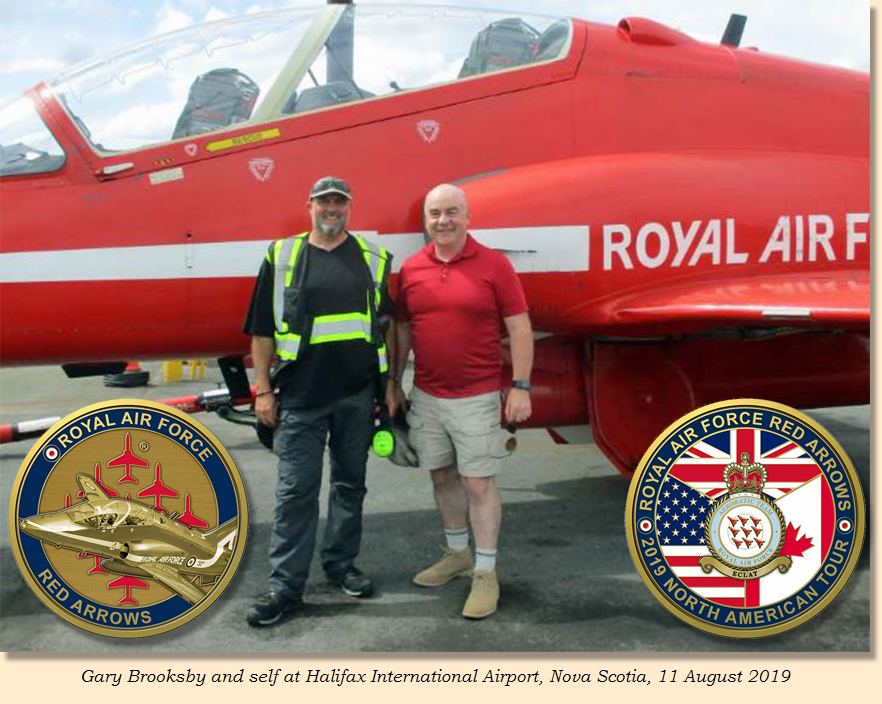
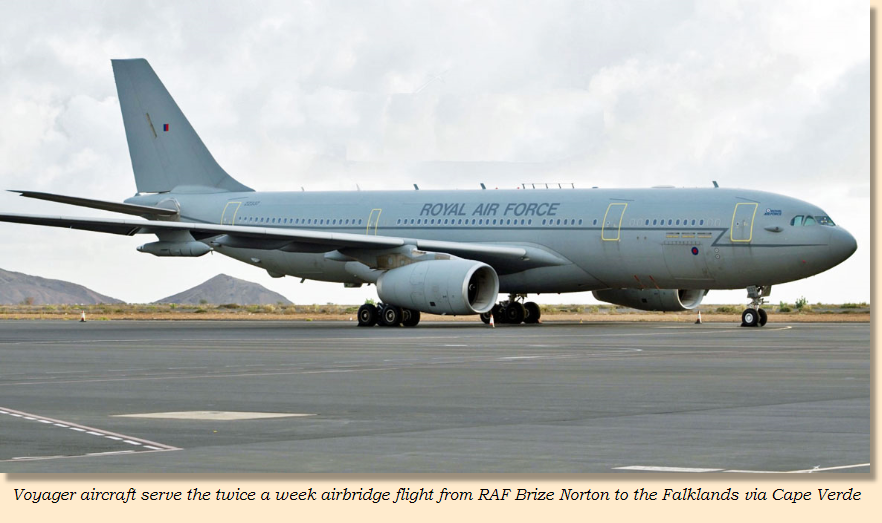

Subject: Memories of my Air Movements Training
My Movements Training was at RAF Kidbrooke in July 1960. This was a Joint Service School located in South East London. The Course consisted of three phases: Land, Sea and Air Movements.
The Land Movements phase dealt mainly with the responsibilities of the Rail Traffic Officers at Main line rail Stations. This element was mainly Theory and no practical involvement was carried out. Subsequently this Role was delegated to the Royal Corps of Transport.
The Sea Movements phase proved much more interesting as we carried out both theory and practical exercises. Our final practical consisted of acting as Embarkation Officers at Southampton Port. There we were involved in the documentation and embarkation of the Royal Scots Regiment and families on board the Troopship Dunera for a passage to Tobruk in North Africa. I was to meet up again with the Royal Scots when I was posted as DAMO to RAF El Adem later that year.
The Air Movements phase was by far the largest of the three where we were taught Basic loading techniques with the practical being on a Hastings Aircraft. Hand written Loads and Trim sheets for both the Hastings and the Beverley were a common factor during this phase.
In all the Course was very concentrated and exacting, however, it was not all work and no play. As the RAF Station was only a 5 minute walk away from Kidbrooke railway Station many evening excursions were made to Central London where sites such as Raymond Review Bar and the 2is Club were frequently visited.
At the end of the Course I was posted to RAF Sharjah and John ?? who was single member was posted to RAF Khormaksar. As I was newly married I asked our Course Director if he could arrange a transfer between us. This was duly done and John landed up in Sharjah whilst I for some reason landed up in El Adem where I had to wait 6 months for my wife to join me.
Never know why I asked for the exchange as my Movements career would have taken a completely different path.
As it was I was DAMO at RAF El Adem, OC Booking Centre, JFHQ Labuan, SAMO at RAF Abingdon, Team Leader, Training Officer at UKMAMS, and OC Airportability at JATE RAF Brize Norton.
I enjoyed every minute of my 30 years in the RAF in both Movements and Supply.
Allan Walker

Subject: Memories of my Air Movements Training
Hi Tony,
I suspect that I might well be one of only a few Movers still around who undertook their Movements training at RAF Kidbrooke. For the benefit of your younger readers, RAF Kidbrooke was located in suburban SE London near Blackheath. The RAF Movements School was a lodger unit on the station whose primary role was the supply depot for RAF publications and forms. Not a location with a lot of operational flavour! However, the School did have part of an old York aircraft fuselage which was used for loading exercises. I was posted there in September 1957 on my return to UK from RAF Khormaksar. As the picture shows, ranks on my course ranged from Sergeant to Wing Commander, and the syllabus comprised three weeks training on air movement and three on surface movement which was mainly devoted to the handling of troopships. All-in-all, movement training at that time was not the best preparation for what lay ahead on my subsequent posting to RAF Lyneham.
I should be interested to know if anyone recognises people in the photograph. The best I can come up with after 60+ years is:
Back row, third in Sgt Bannister; officer in the centre Bruce D’Arcy Masters; third from the end Sgt Driver; on the end, I think, Sgt Cork.
Front row, second in Derek Matthews: Wg Cdr Fenton (CO designate of the RAF Port Unit Southampton); Ralph Dyson (air instructor); Sqn Ldr Clinton (OC); Harry Corrie (surface instructor); Bob Le Lorraine; Keith Wilkinson; and the good looking one on the end is me.
Despite its shortcomings RAF Kidbrooke was a paradise to young man after two years in Aden where the males outnumbered the eligible females by at least 200 to 1. Central London was a short train journey away and the nurses’ hostel attached to Lewisham hospital was just down the road. But that’s another story!
With Best Wishes
Gerry Pengelly
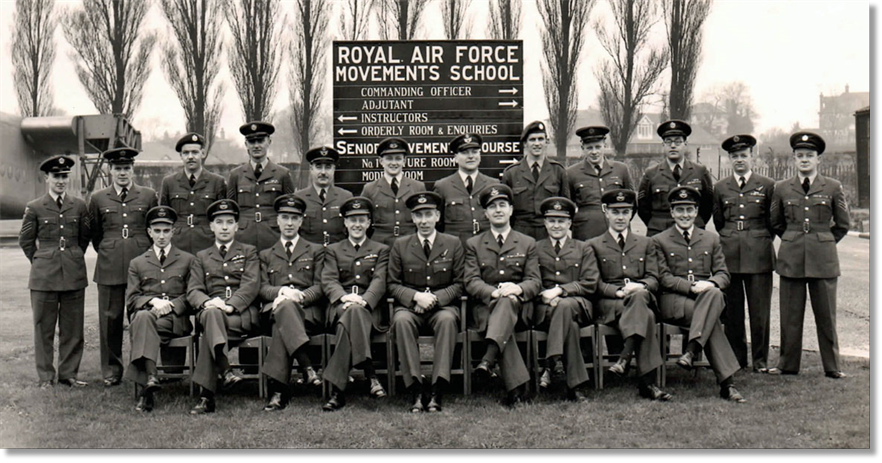
This Newsletter is
Dedicated to the
Memories of:
Keith Smith (RAF)
Jason Walker (RAF)
Chris Bennett (RAAF)
Kenneth Whitby (RCAF)
Geordie Readman (RAF)
Francois Bessette (RCAF)
Donald MacDonald (RCAF)
AVM Gordon Ferguson (RAF)
ukmamsoba@gmail.com
If you wish to donate to the OBA, drop me an e-mail












